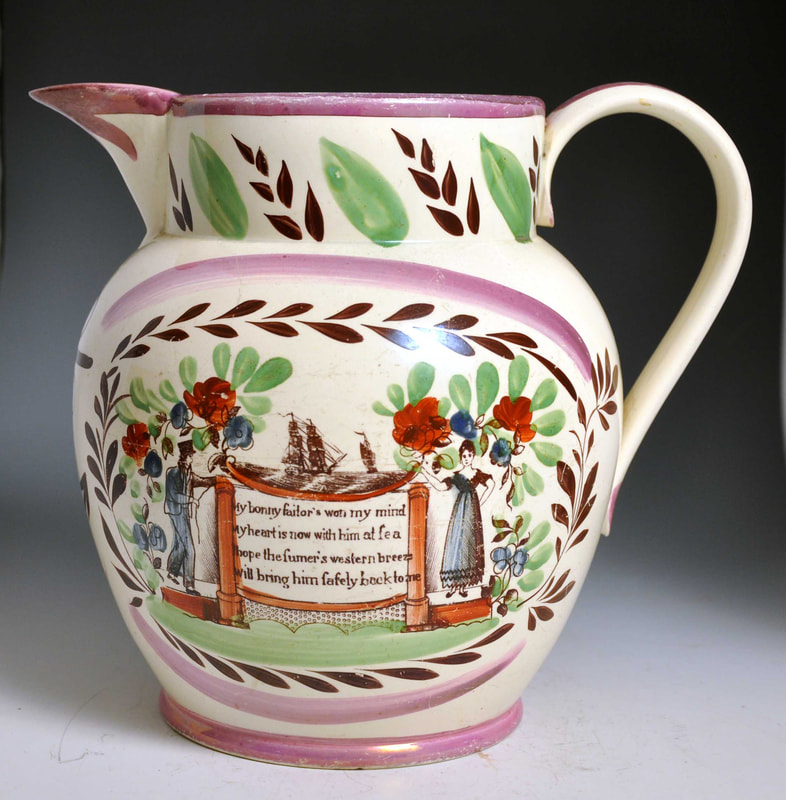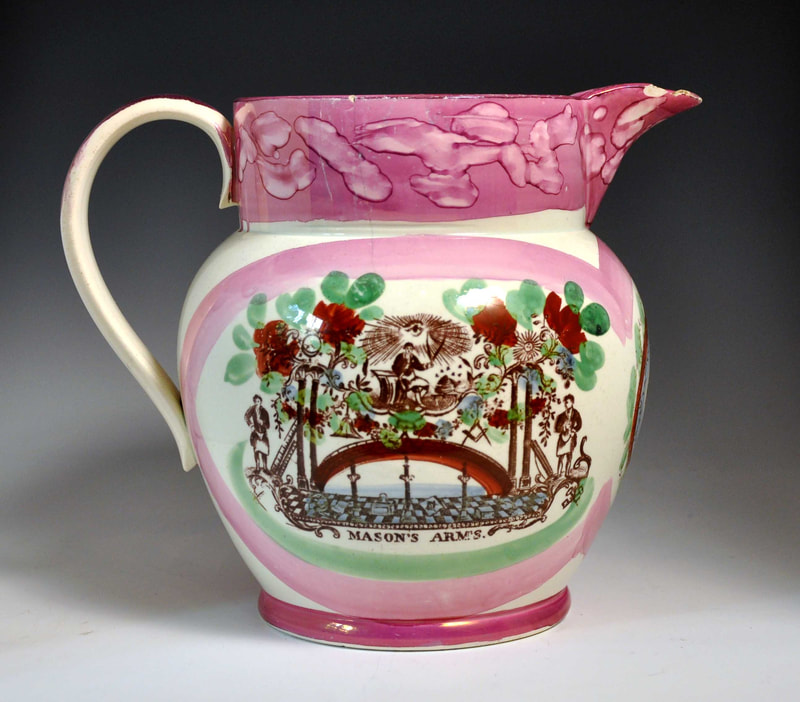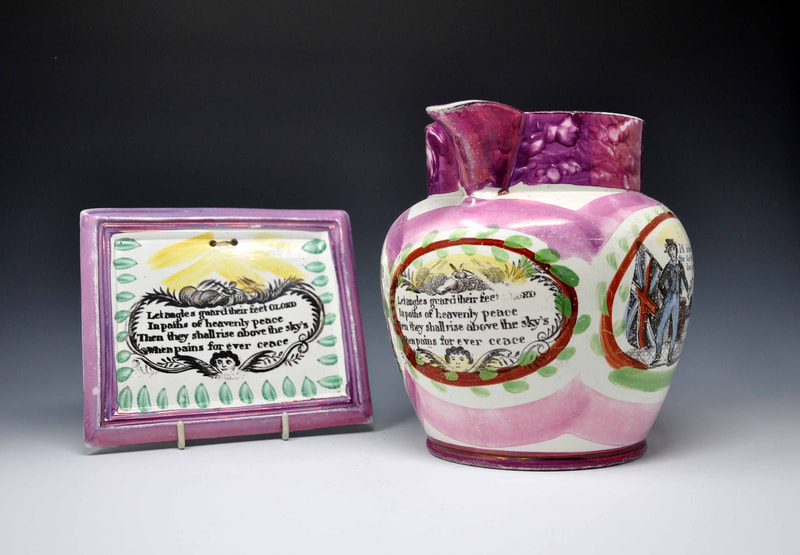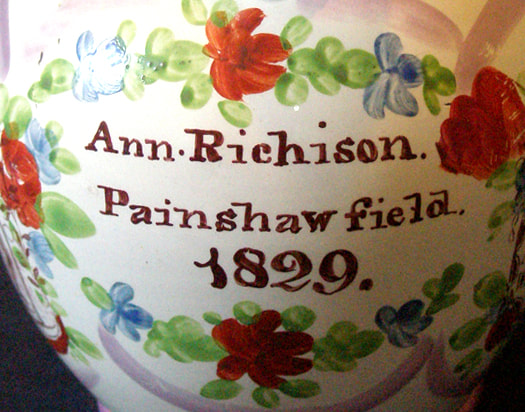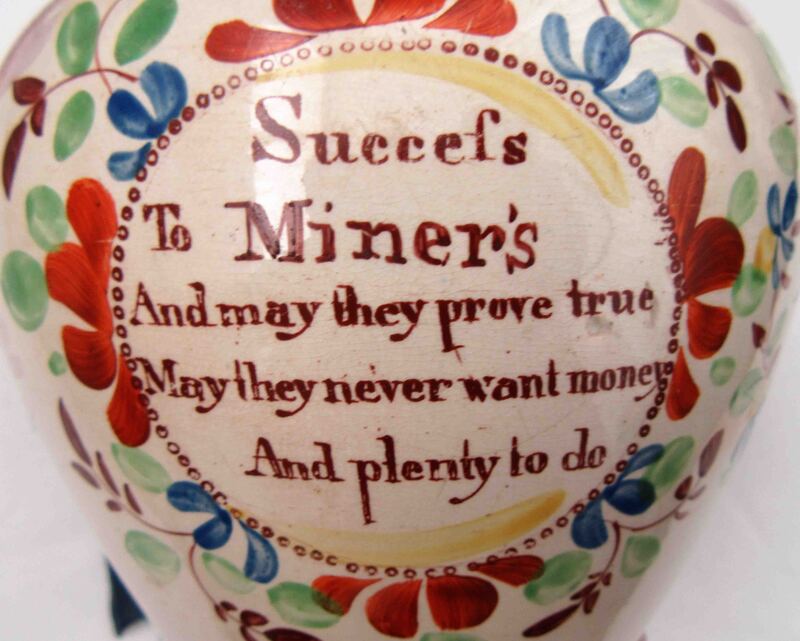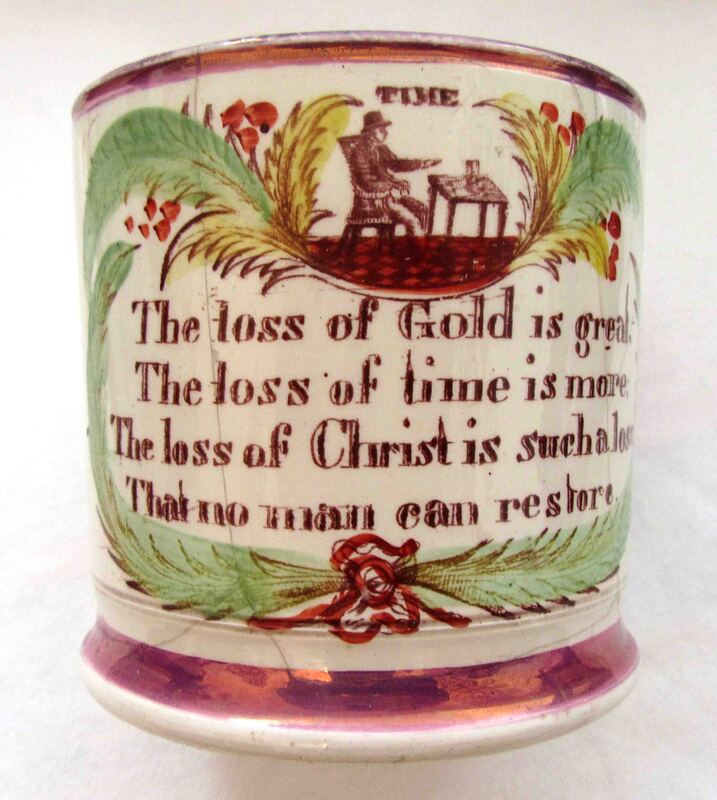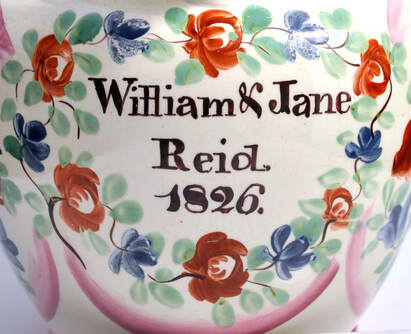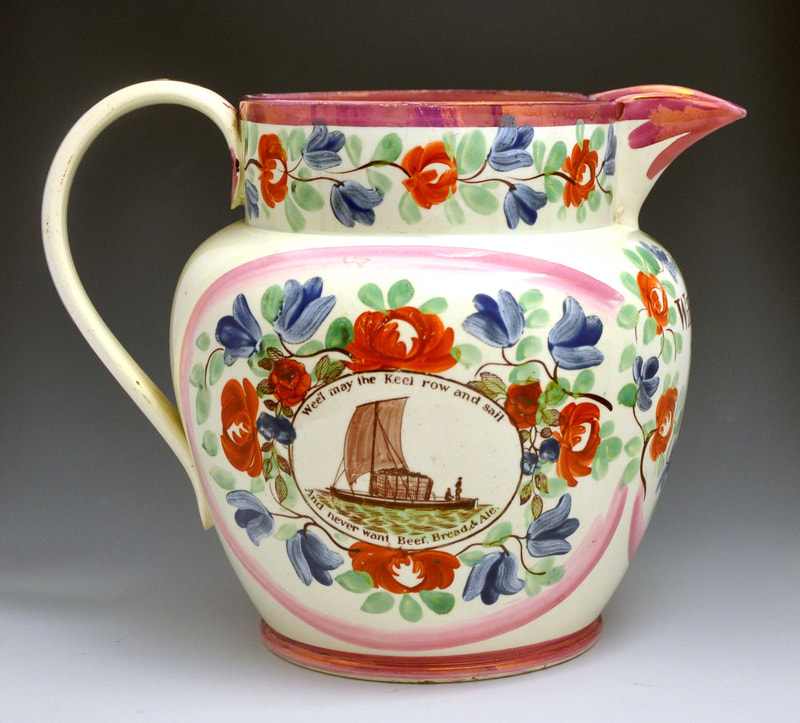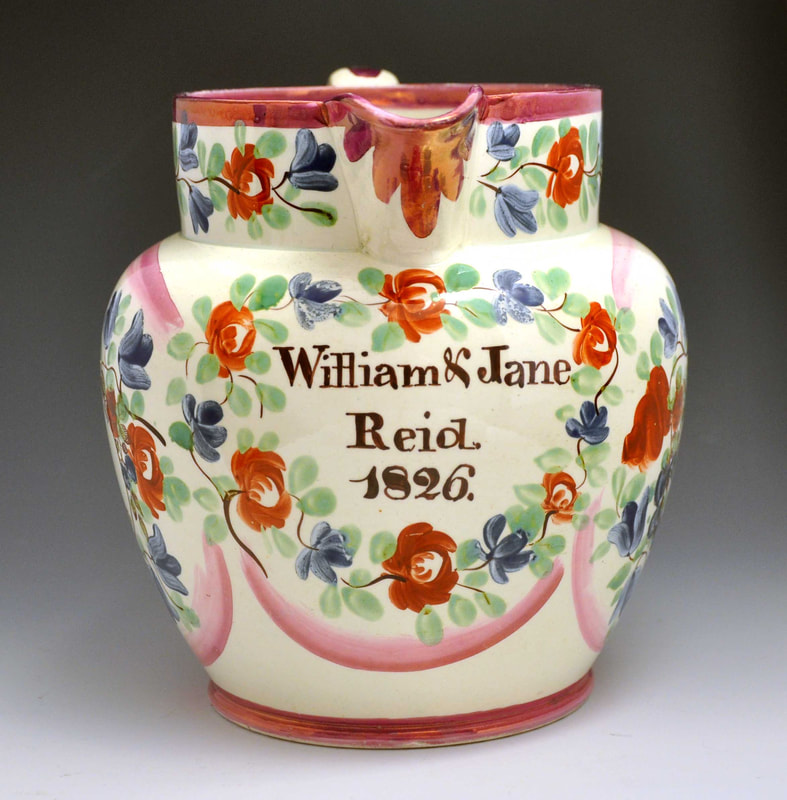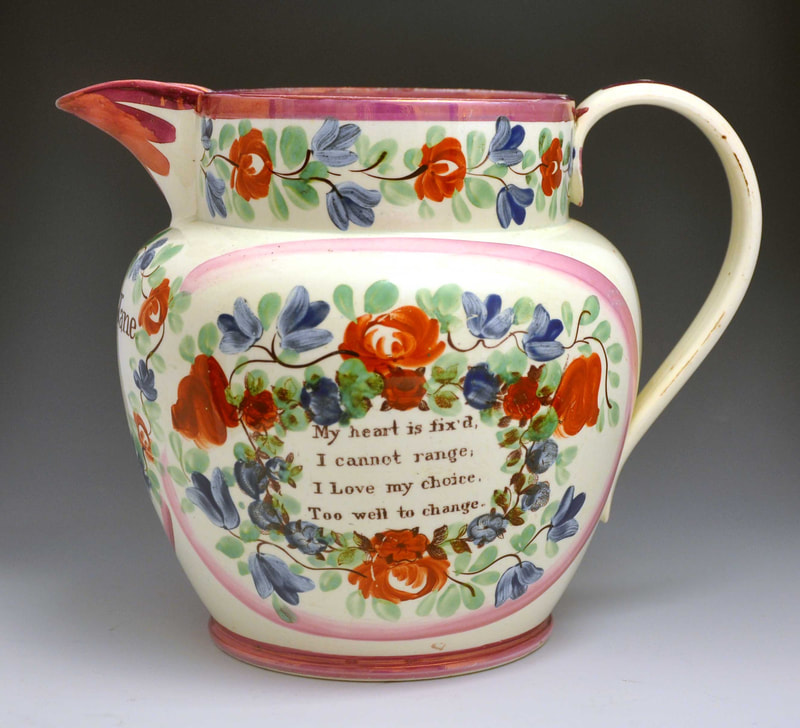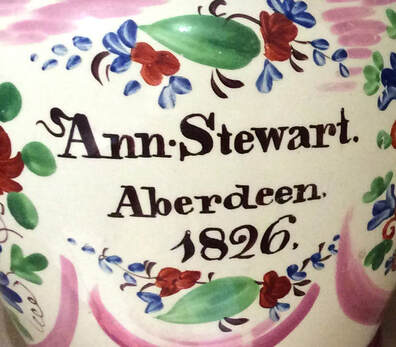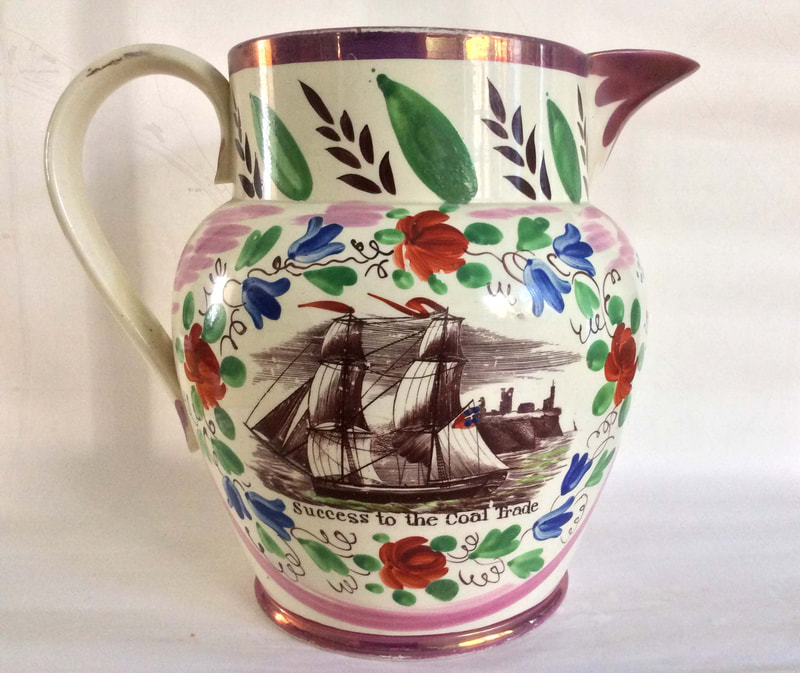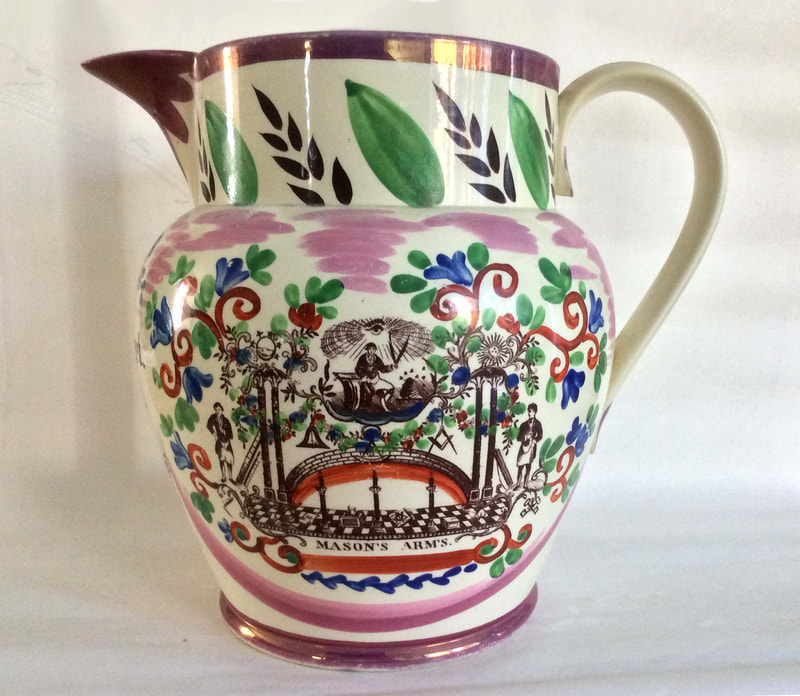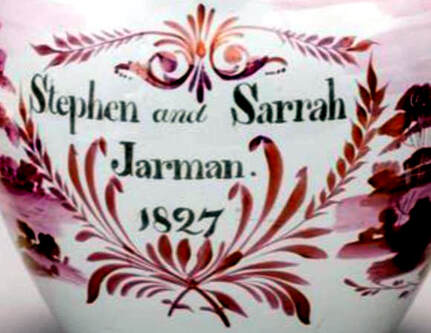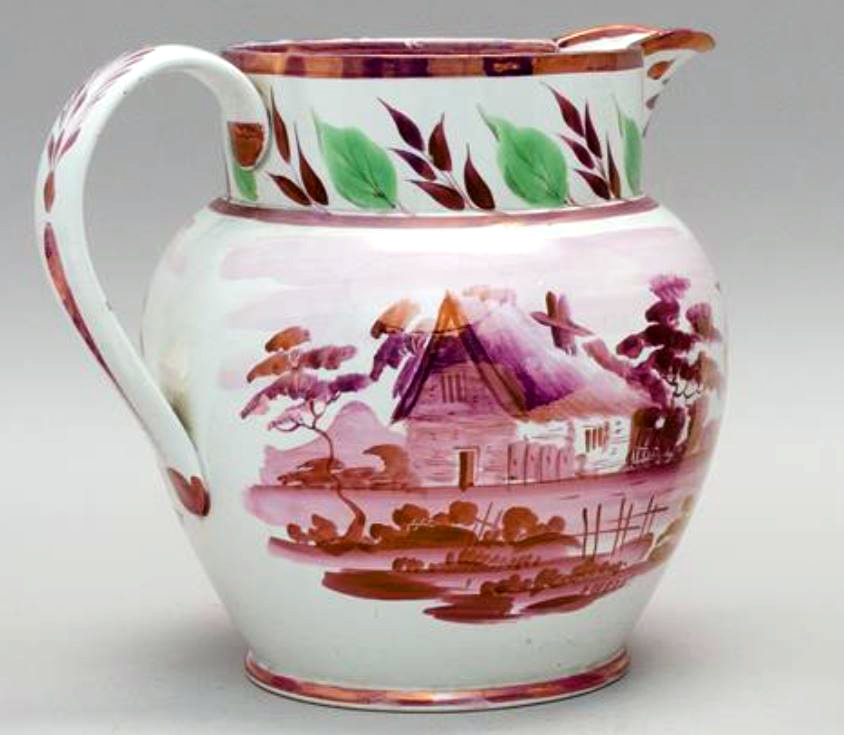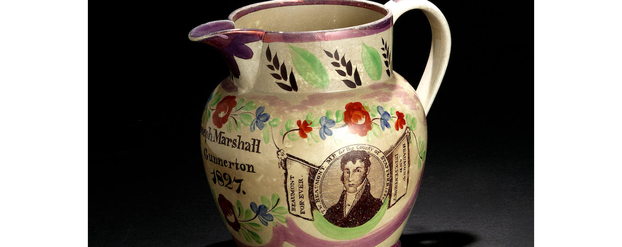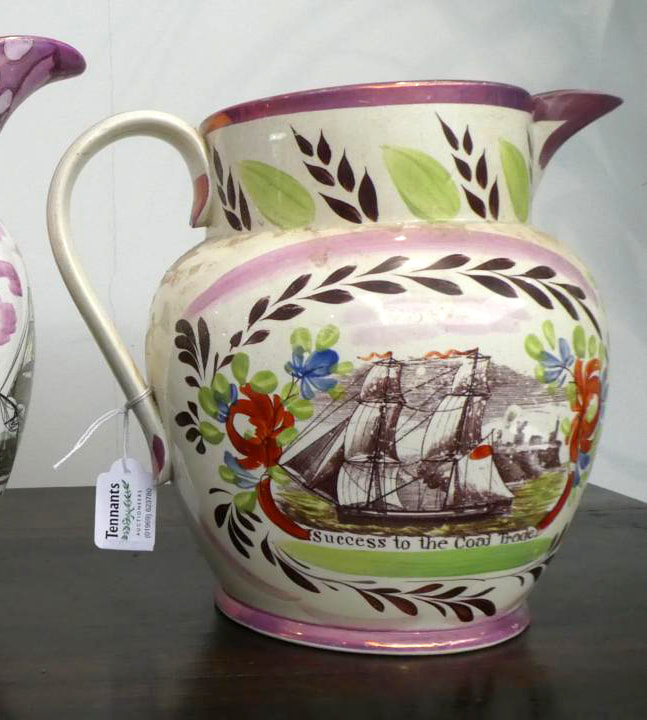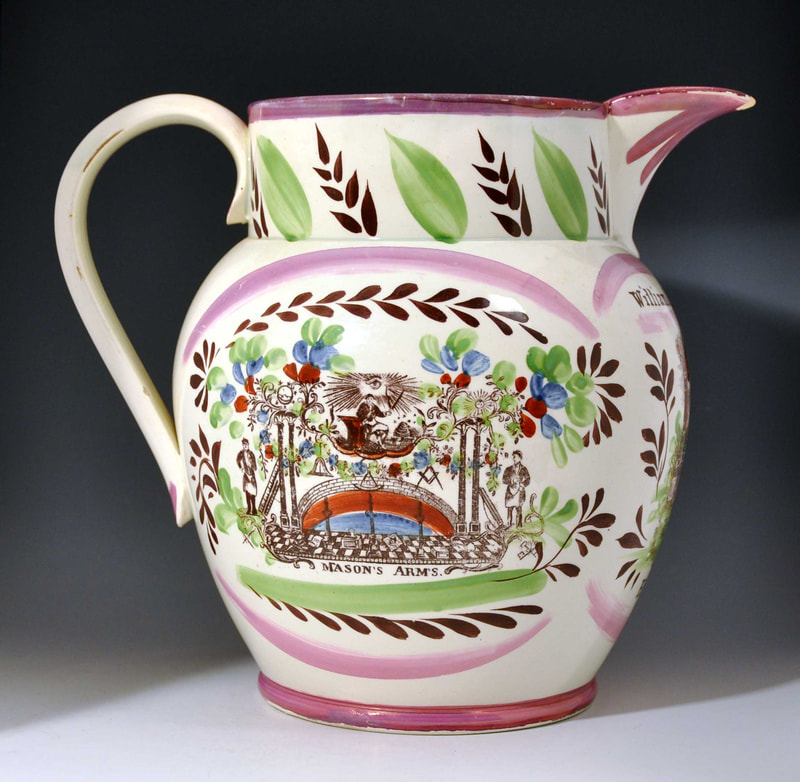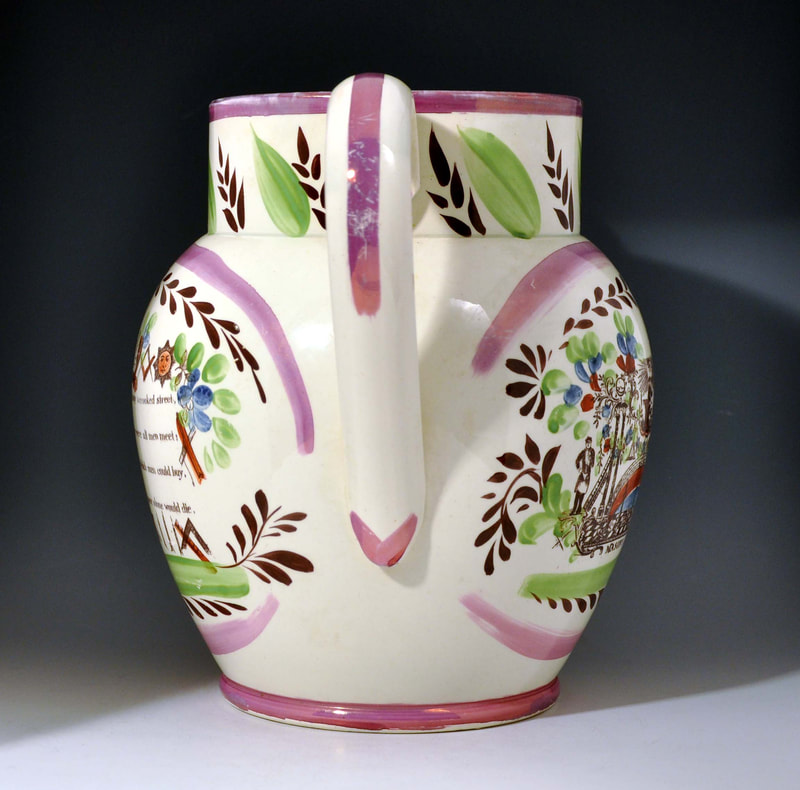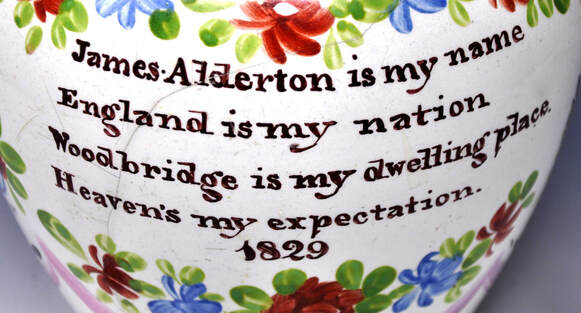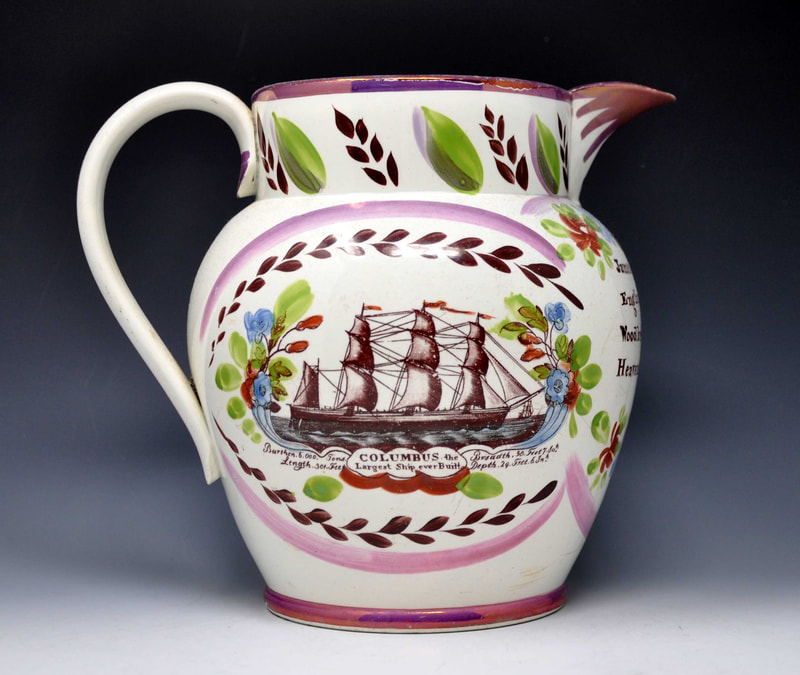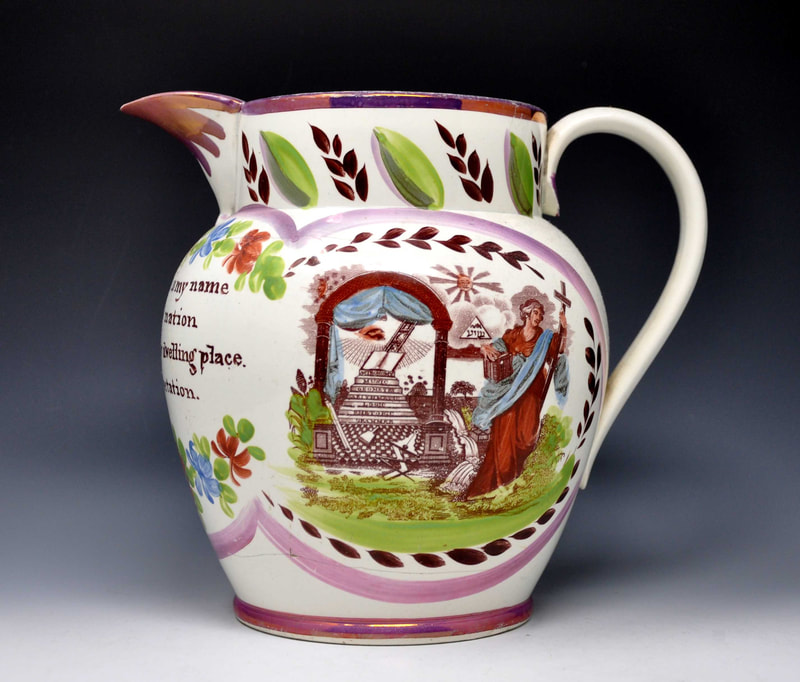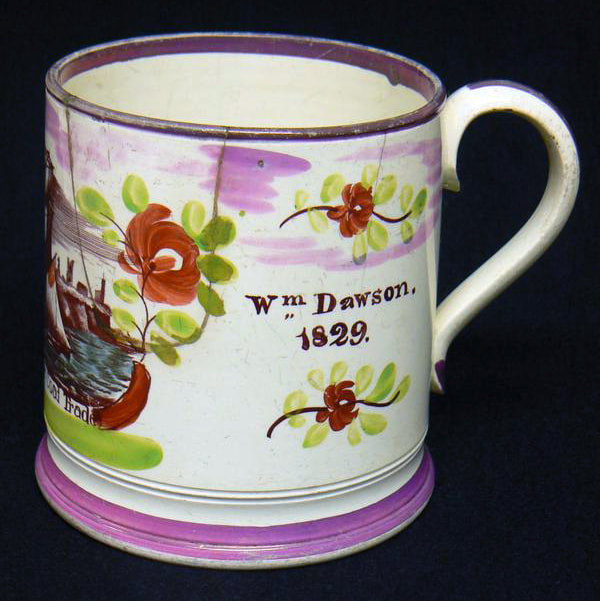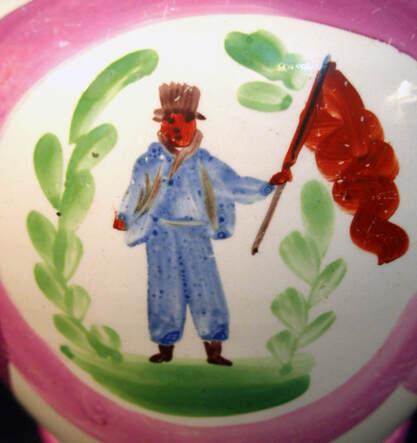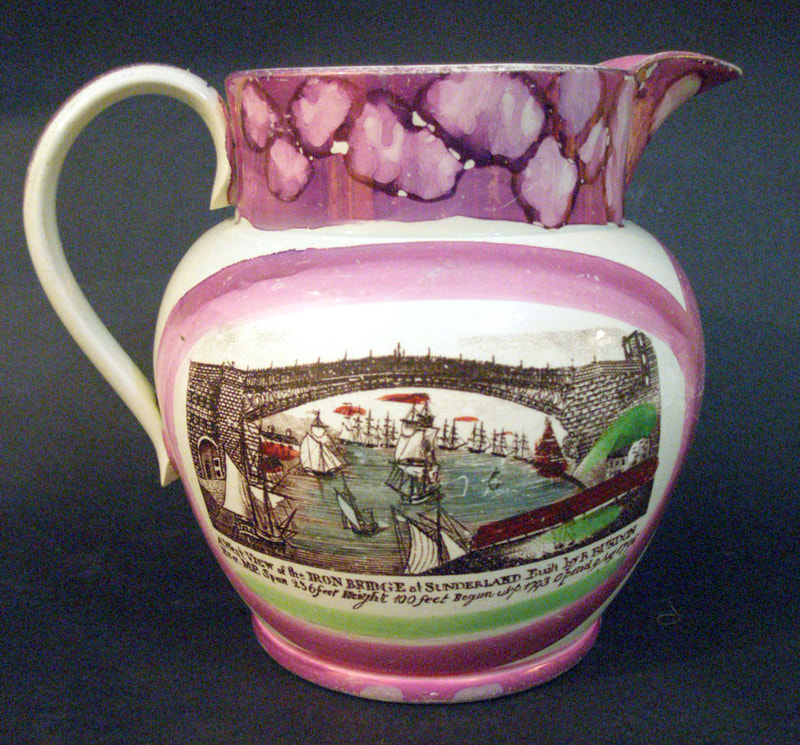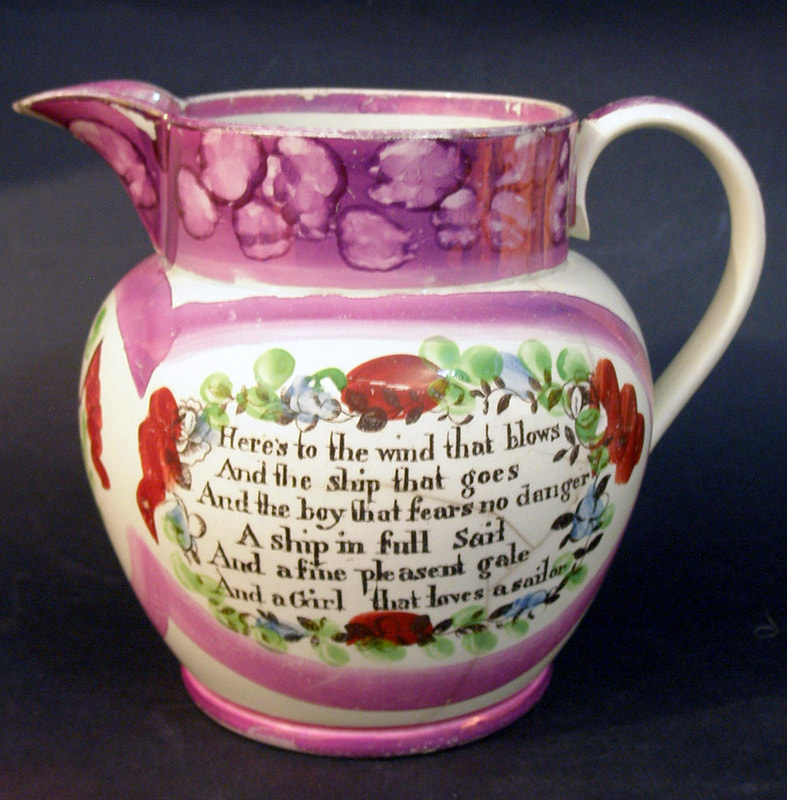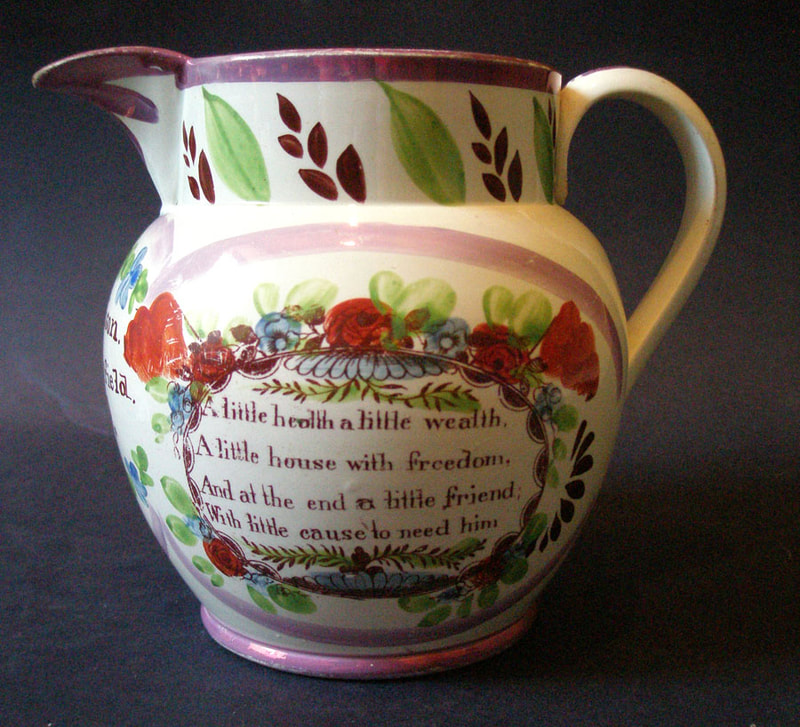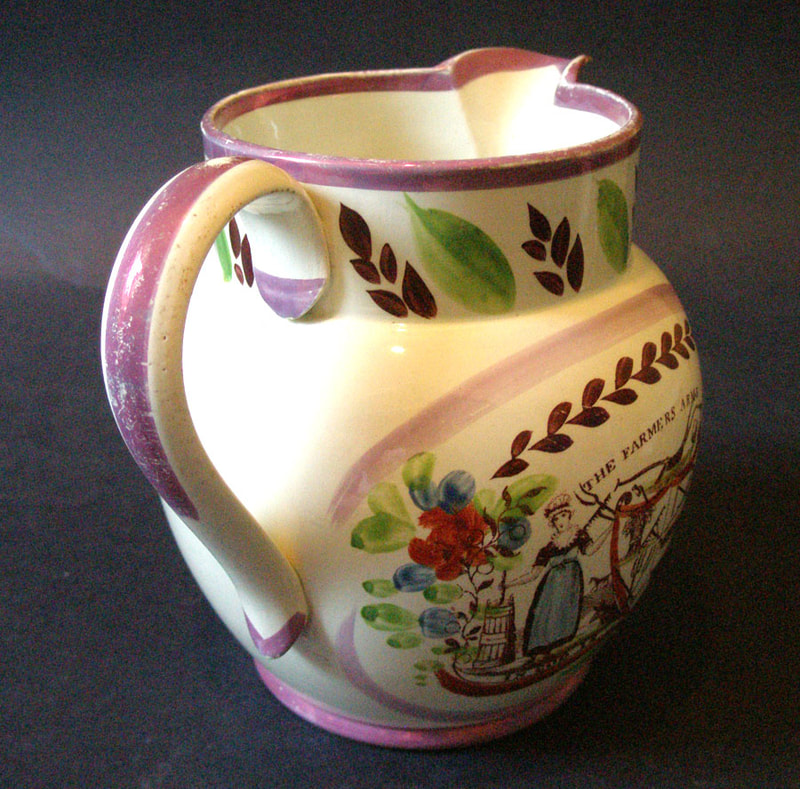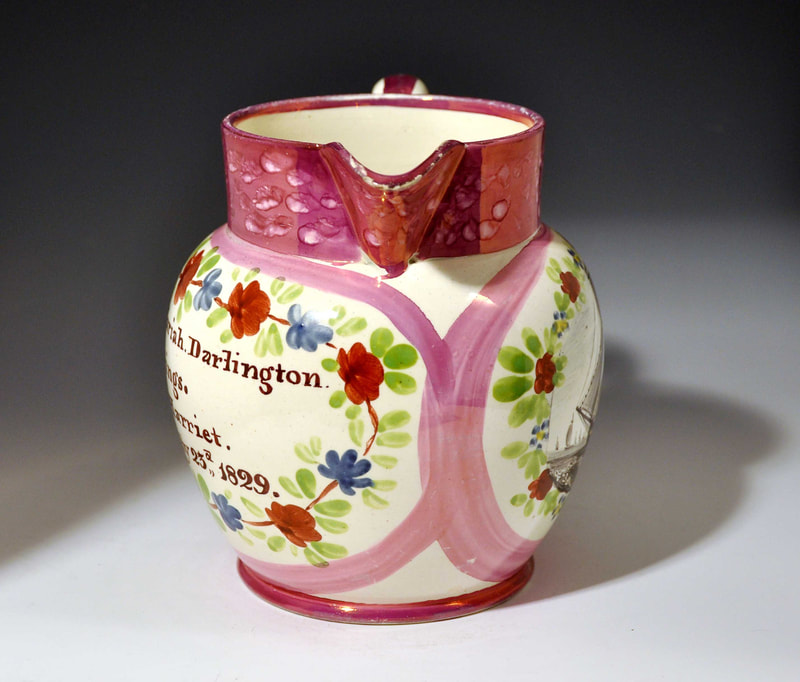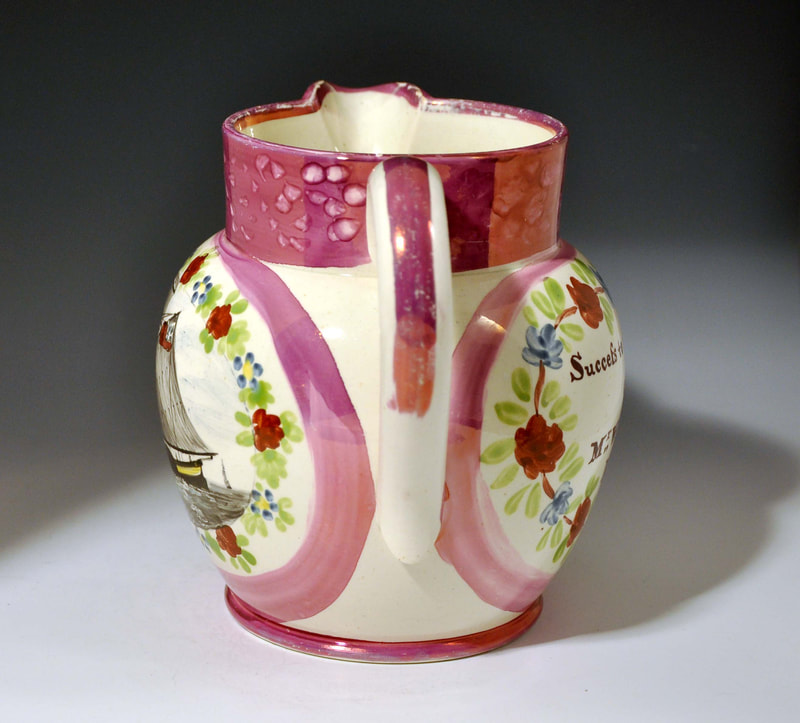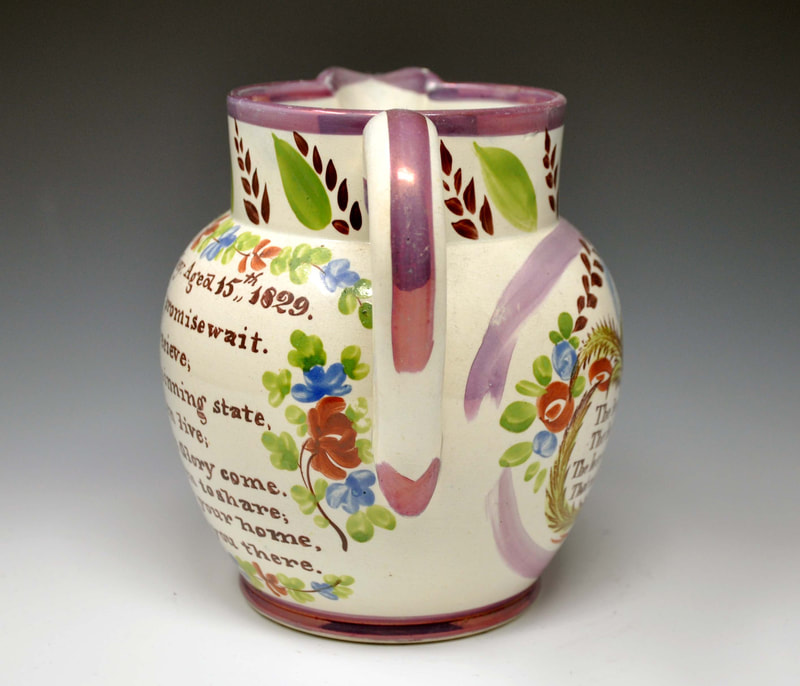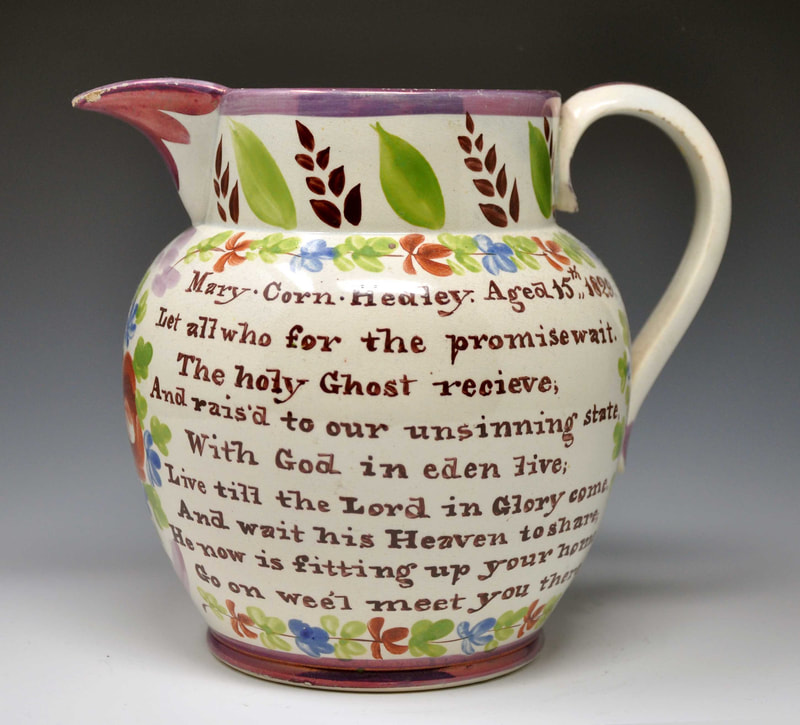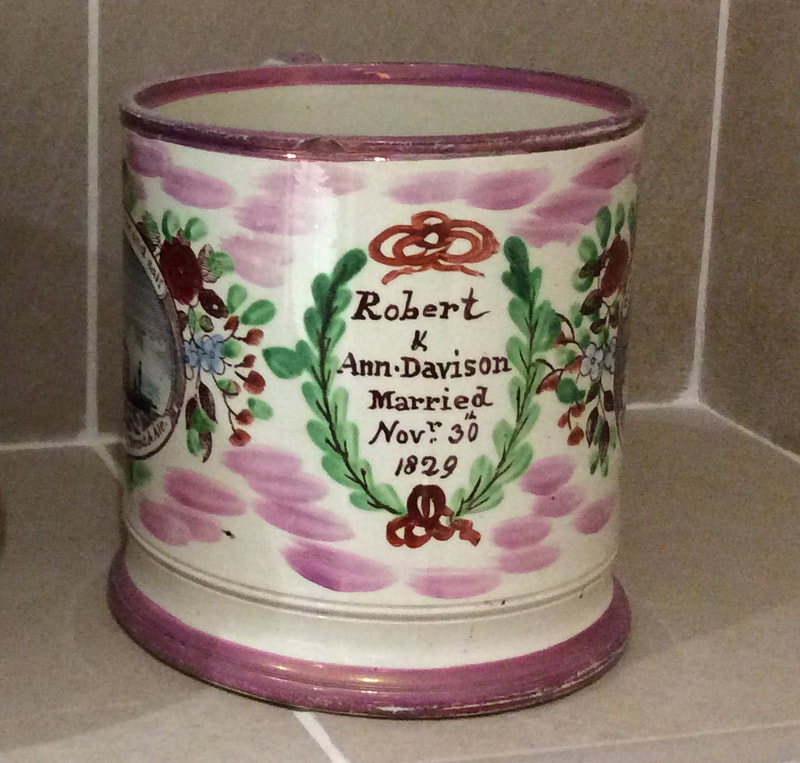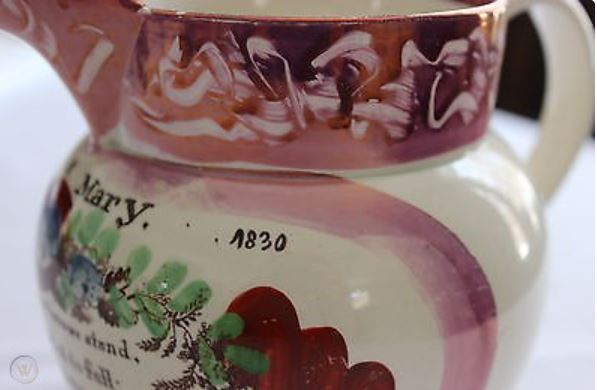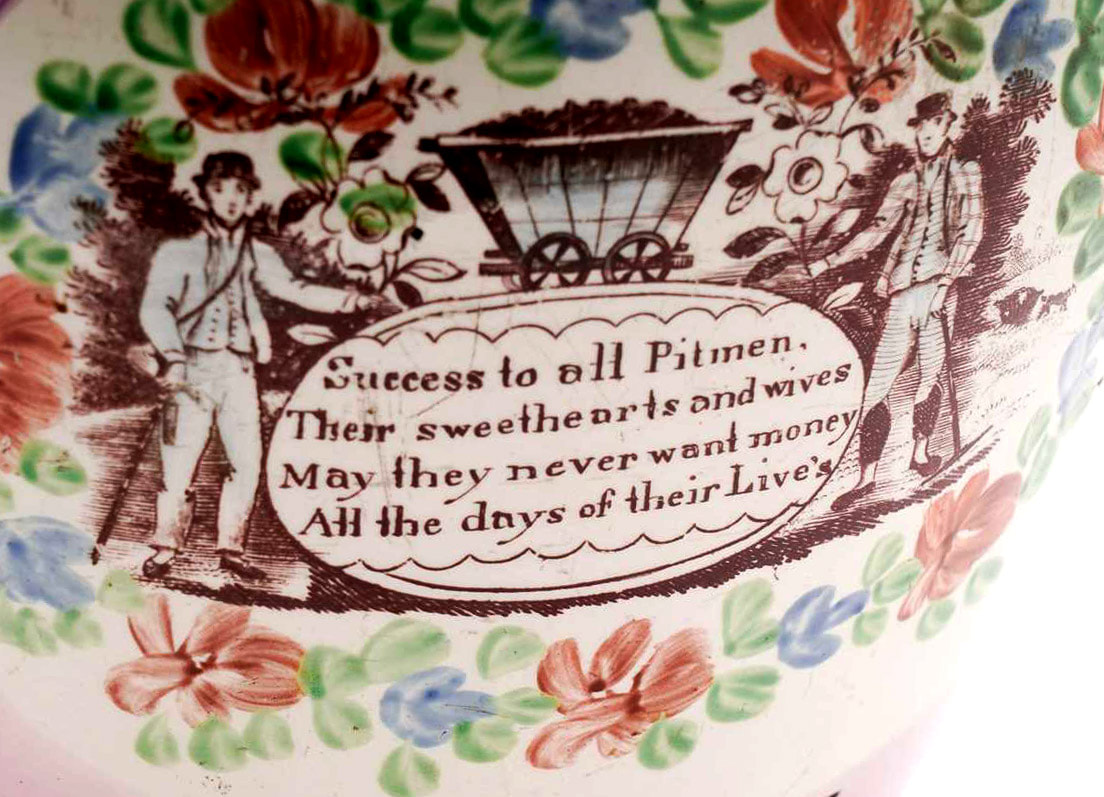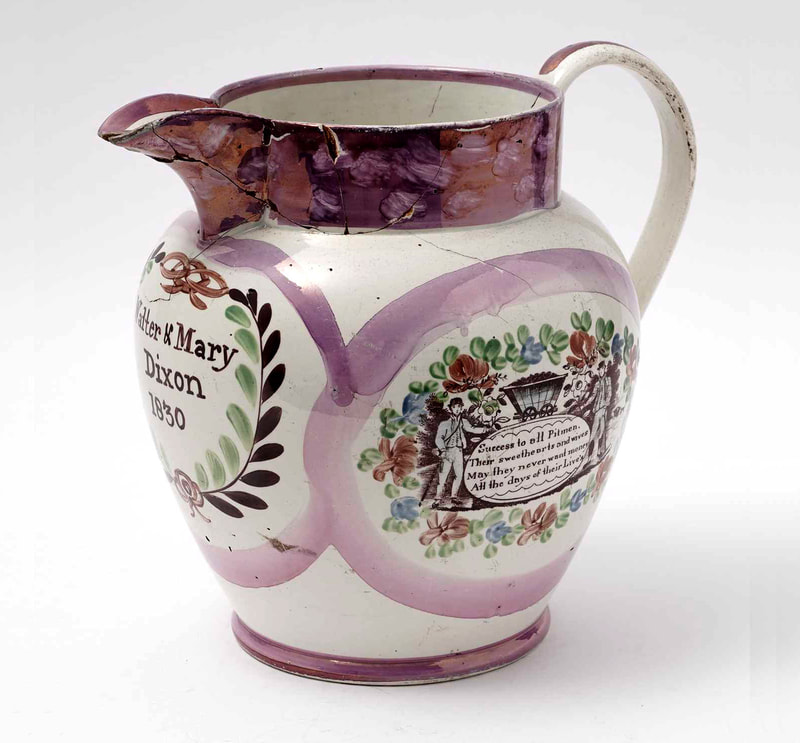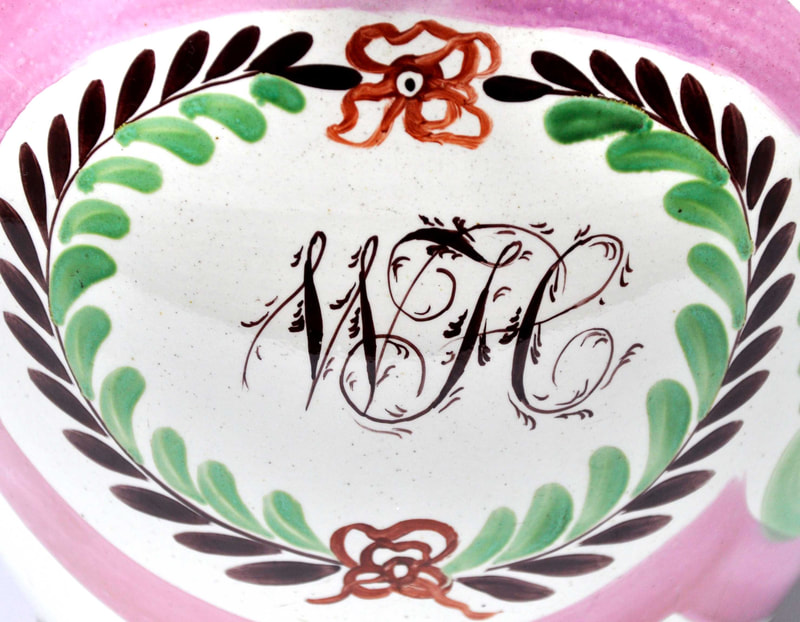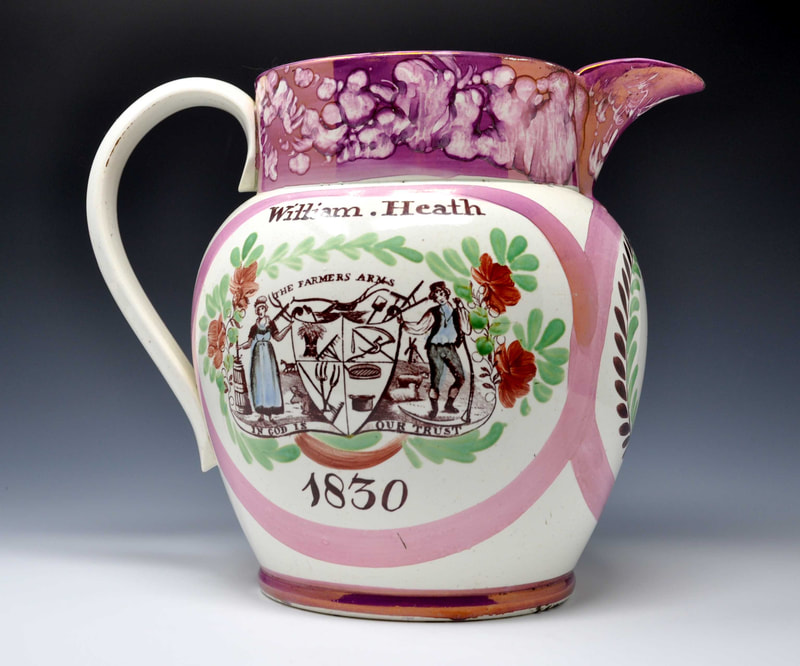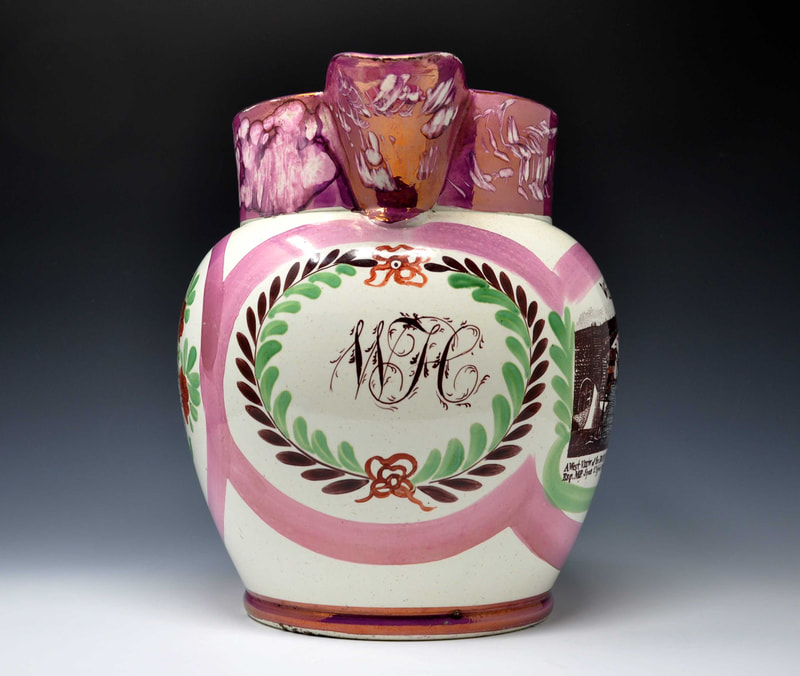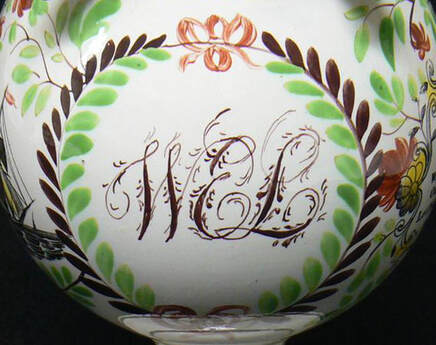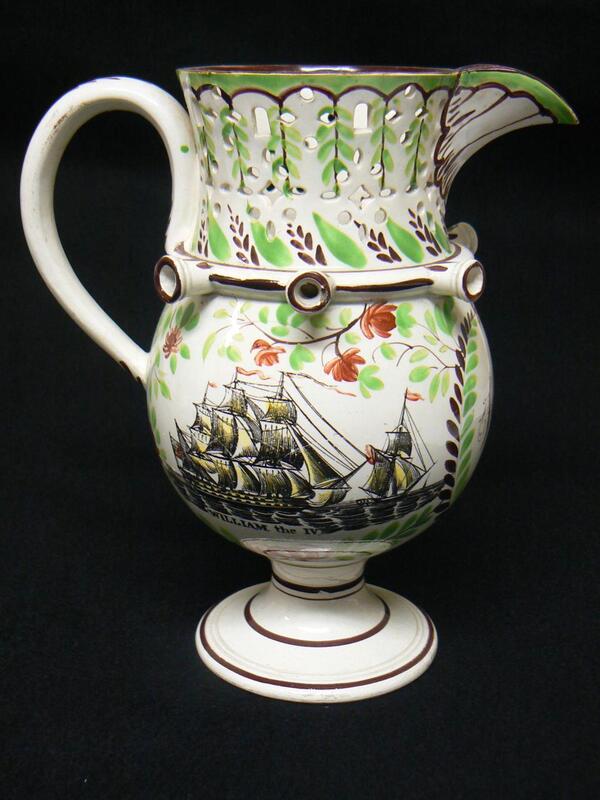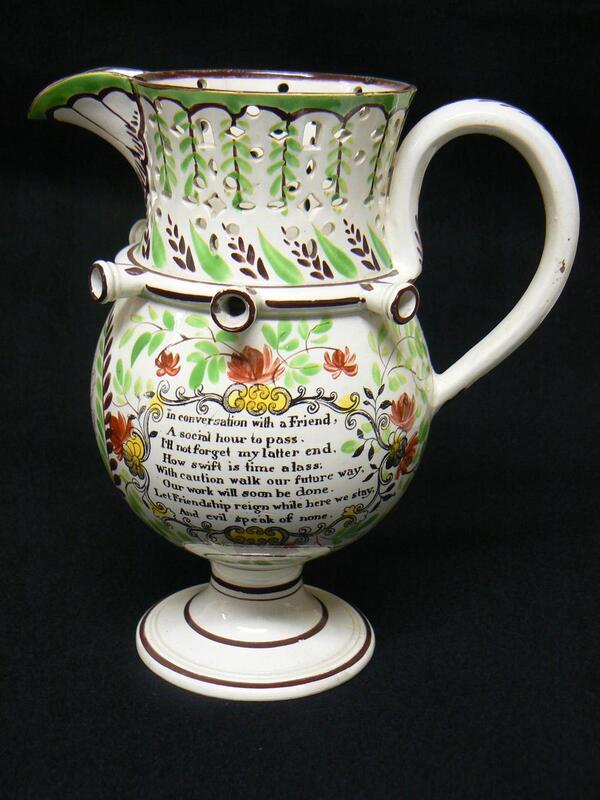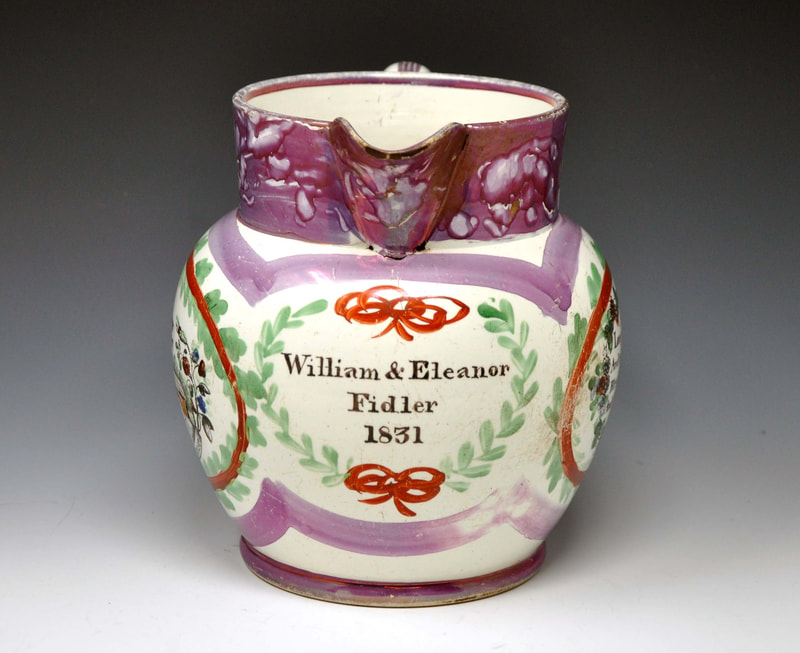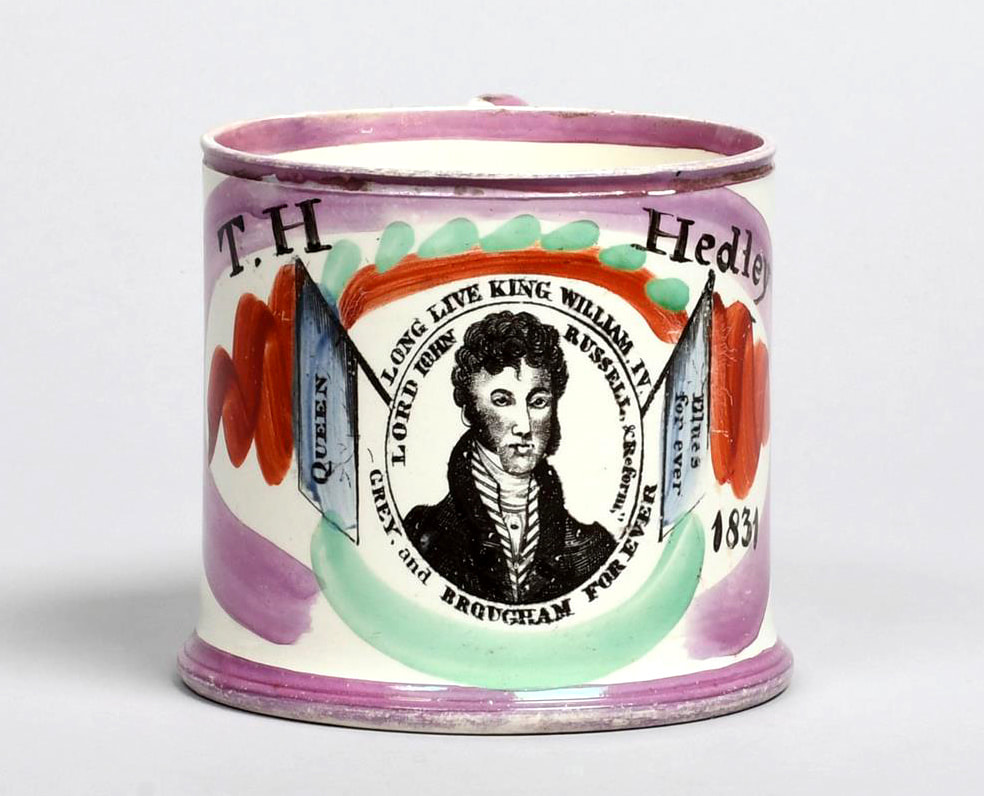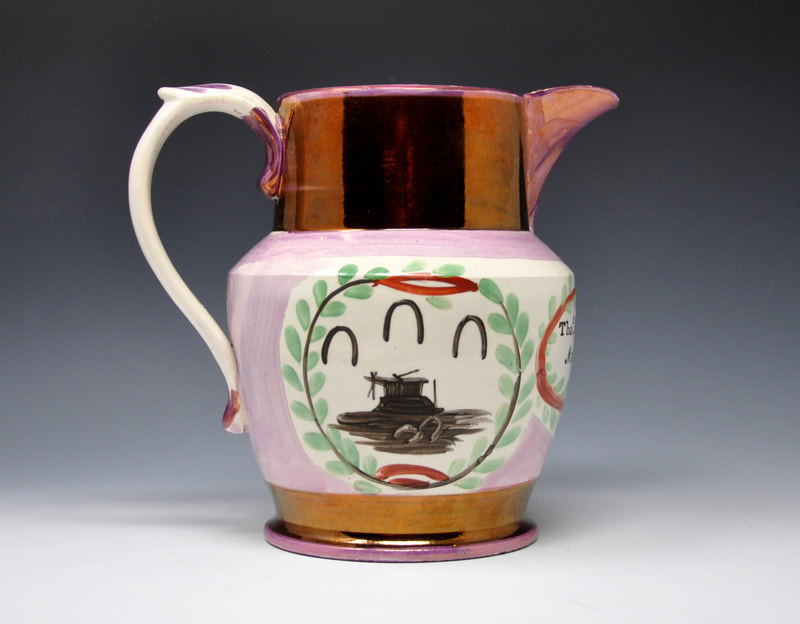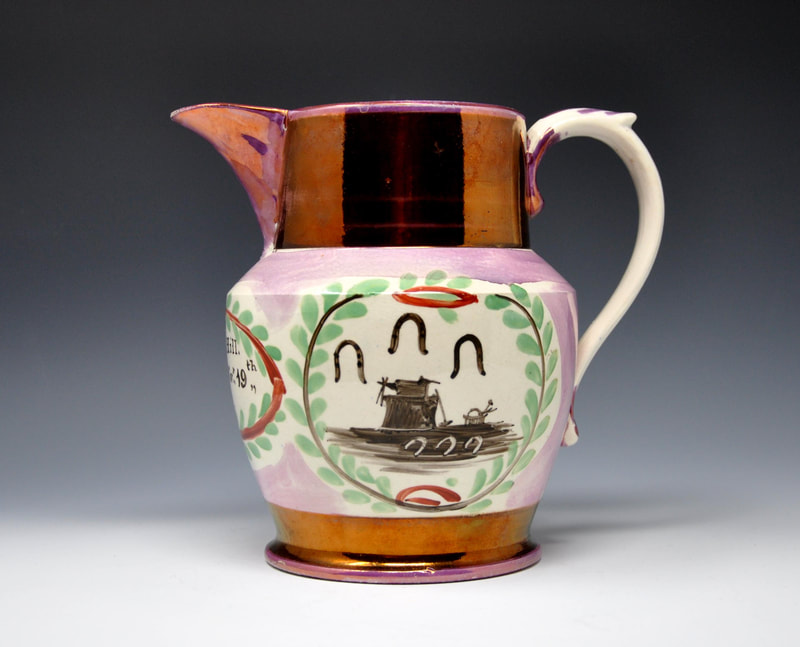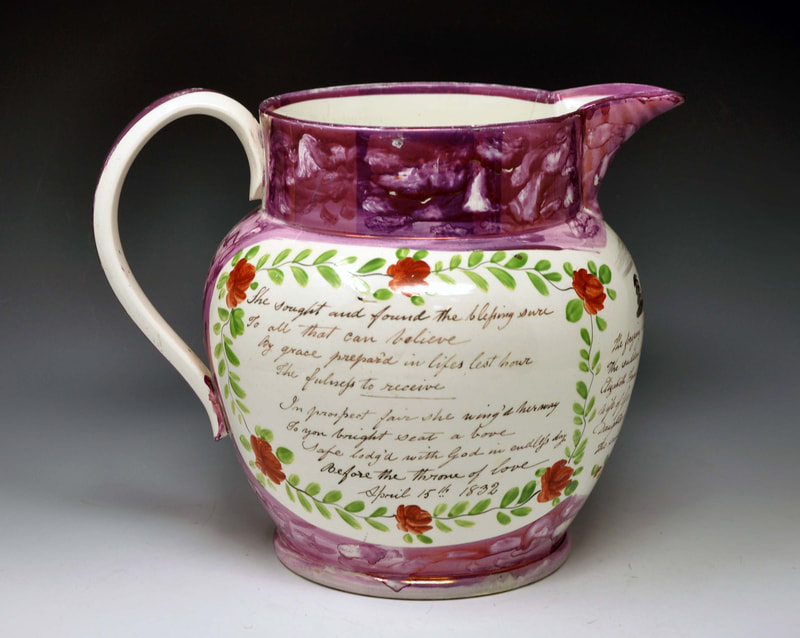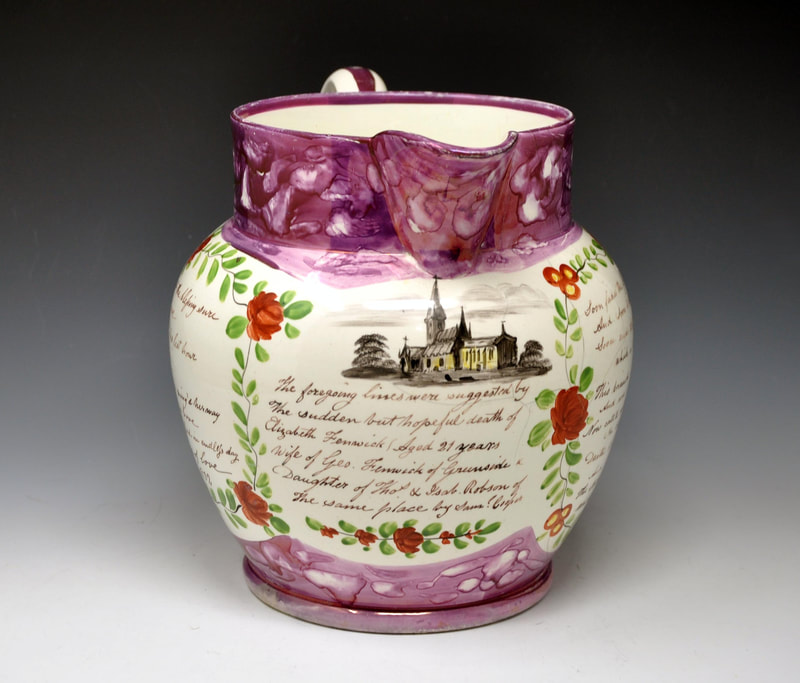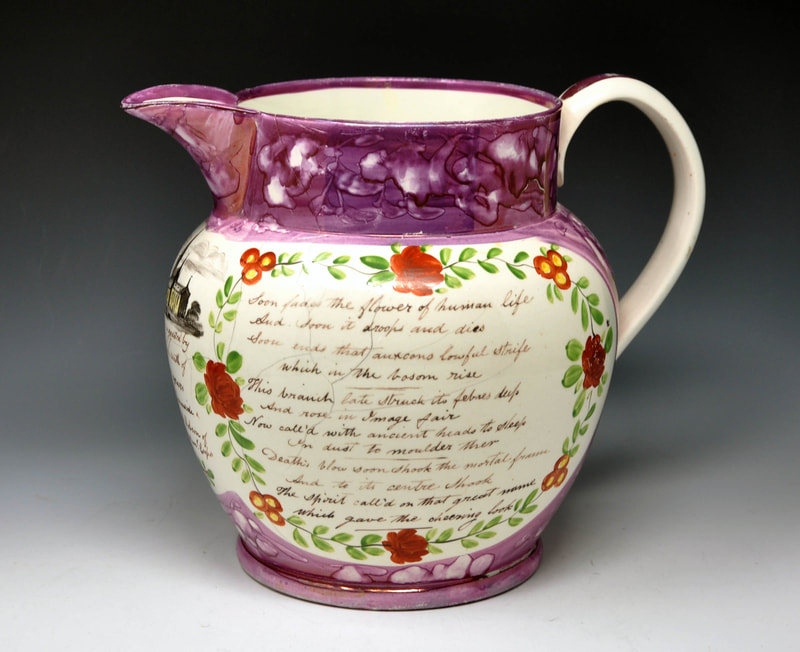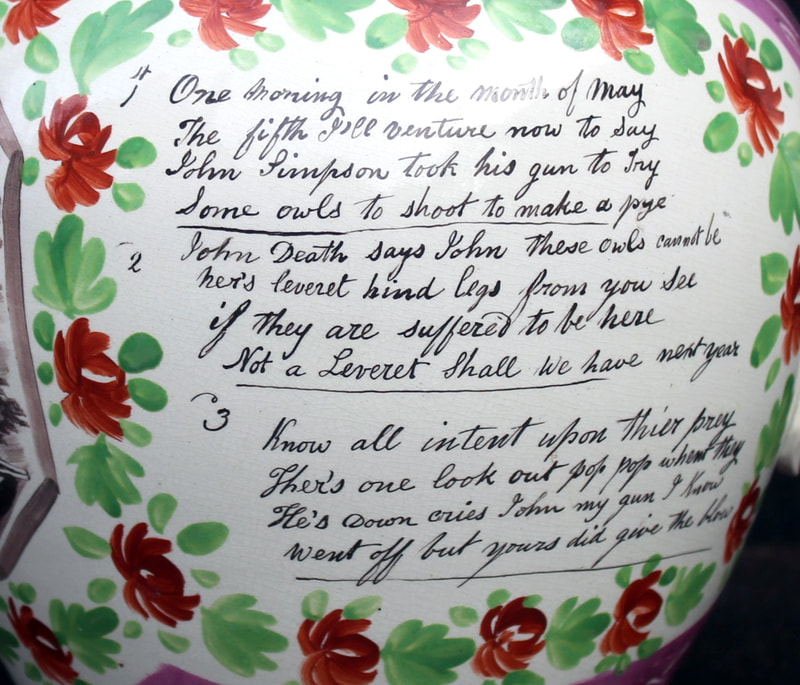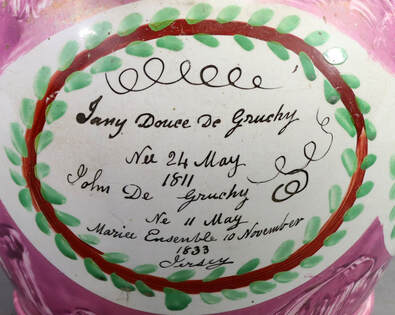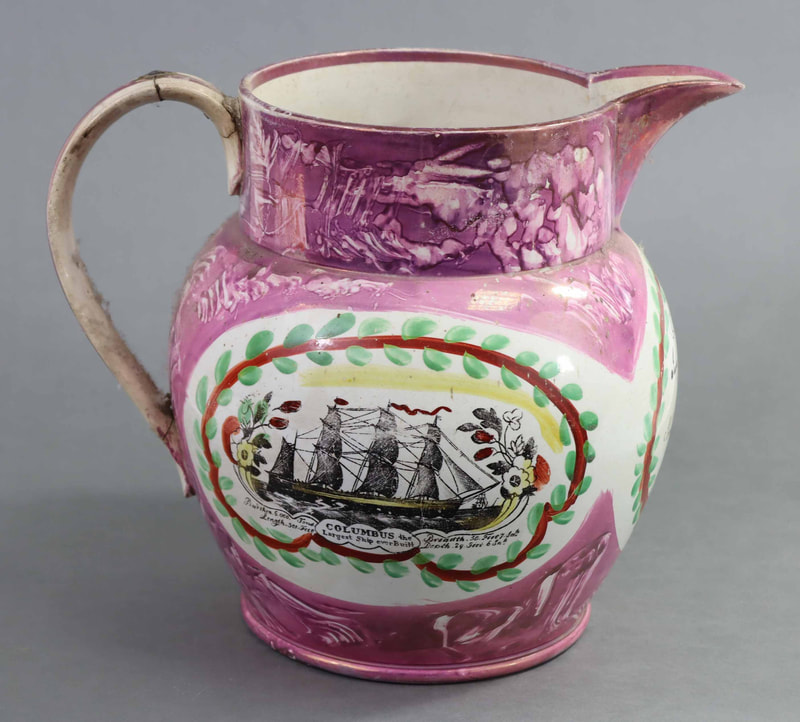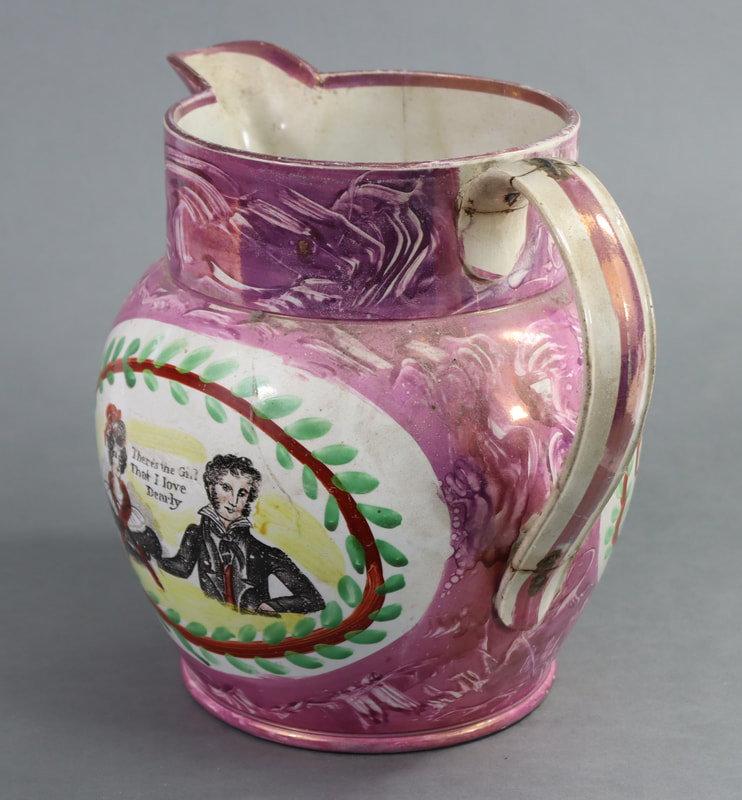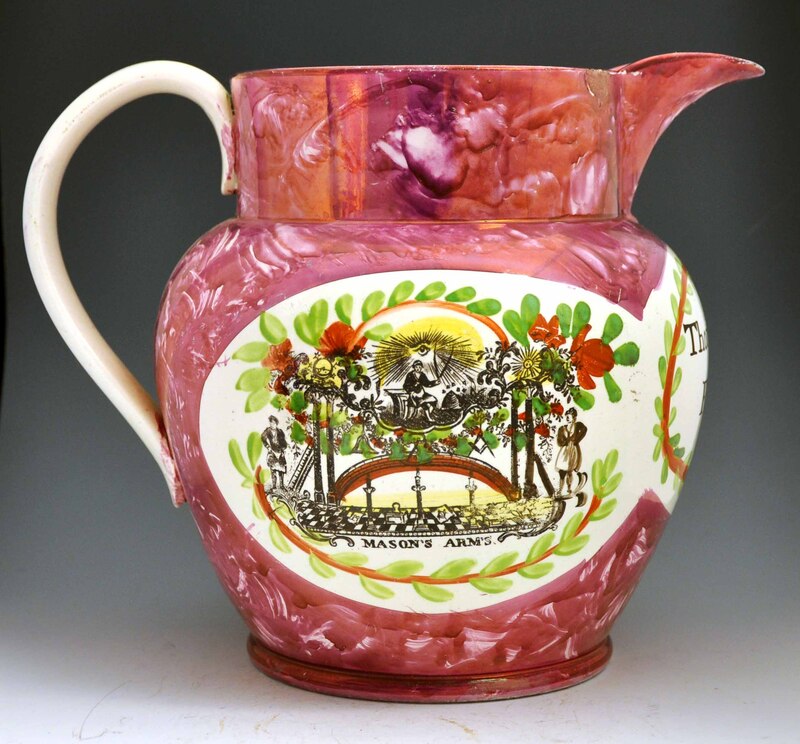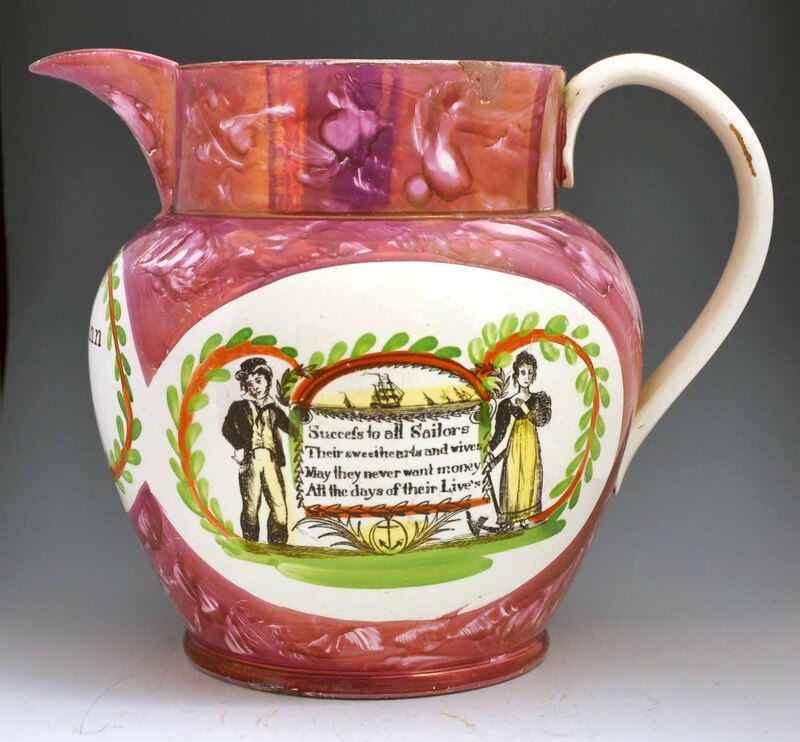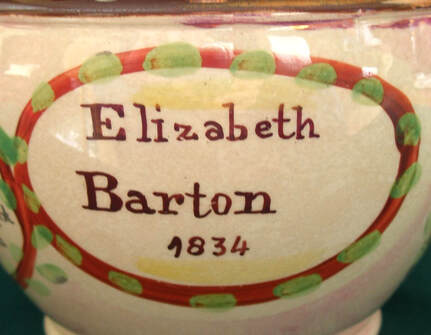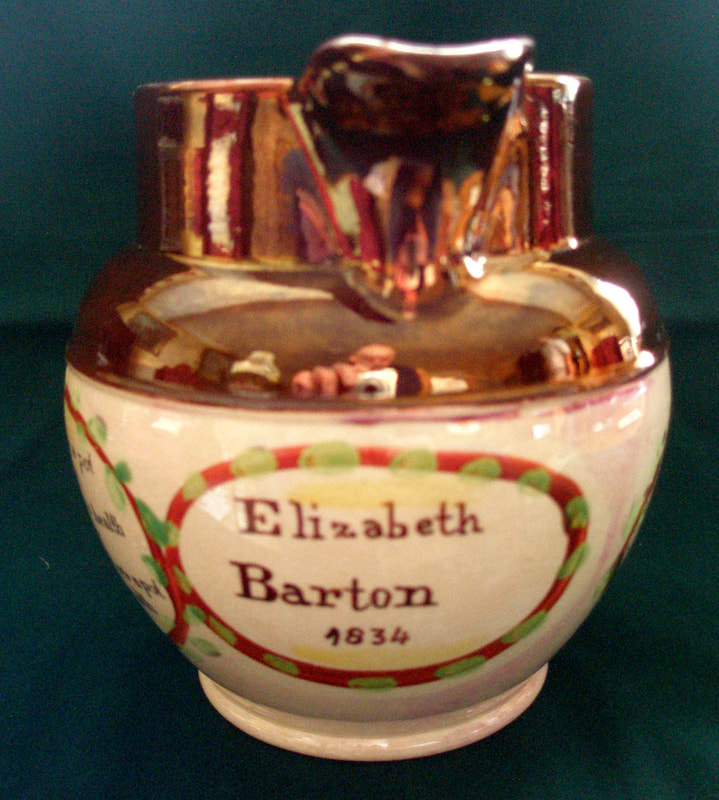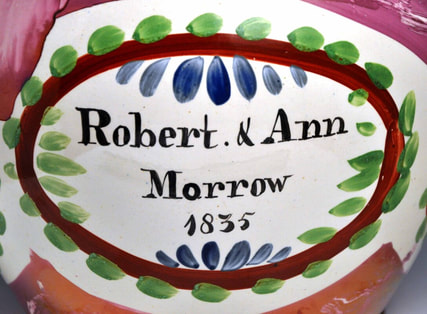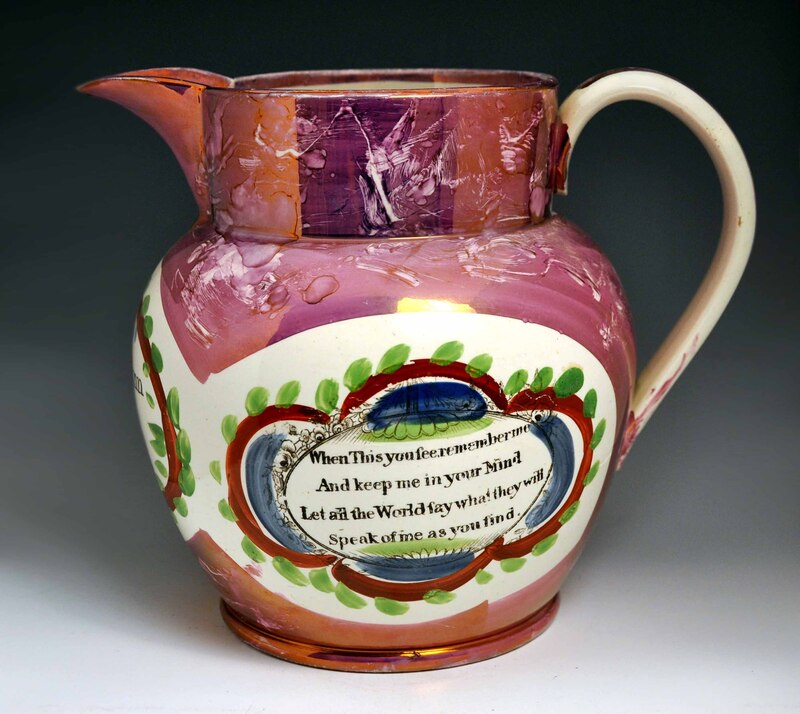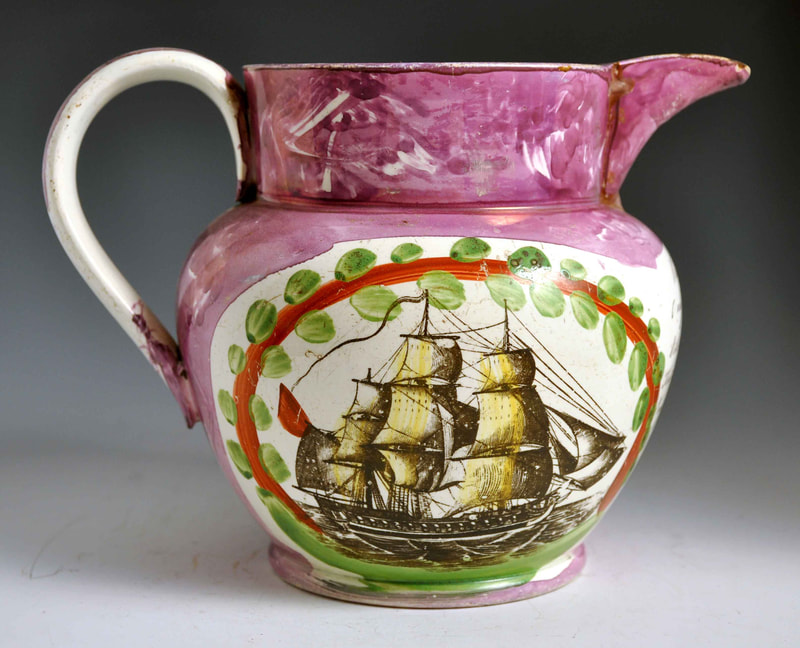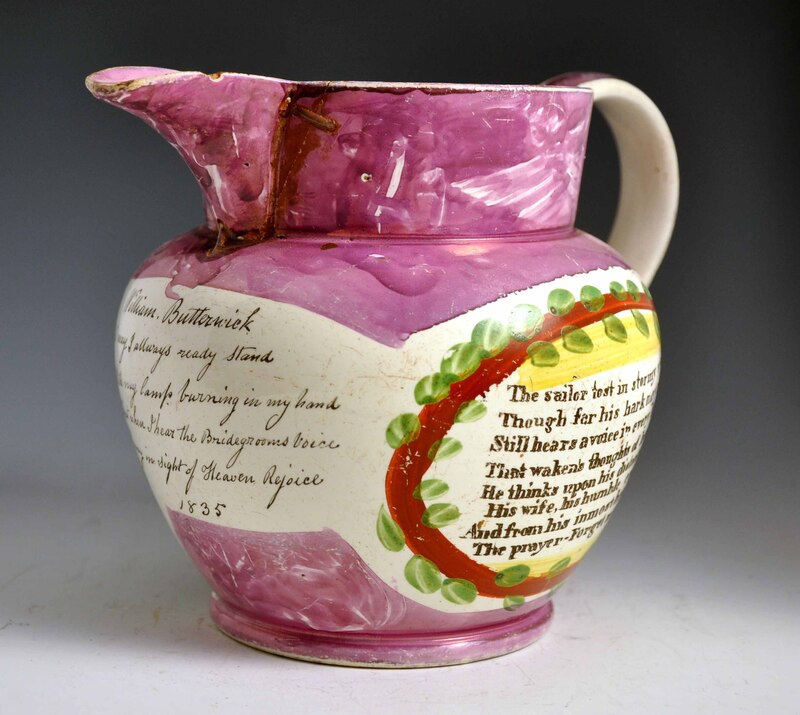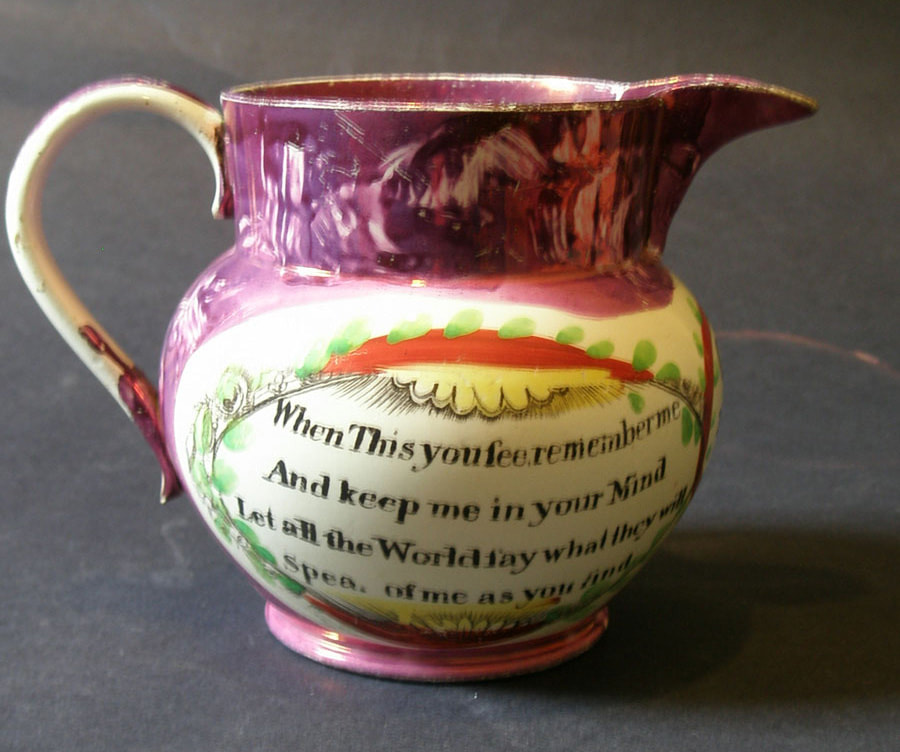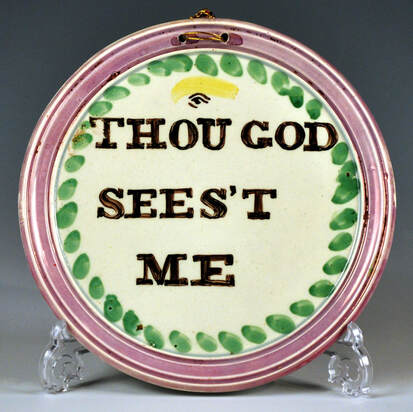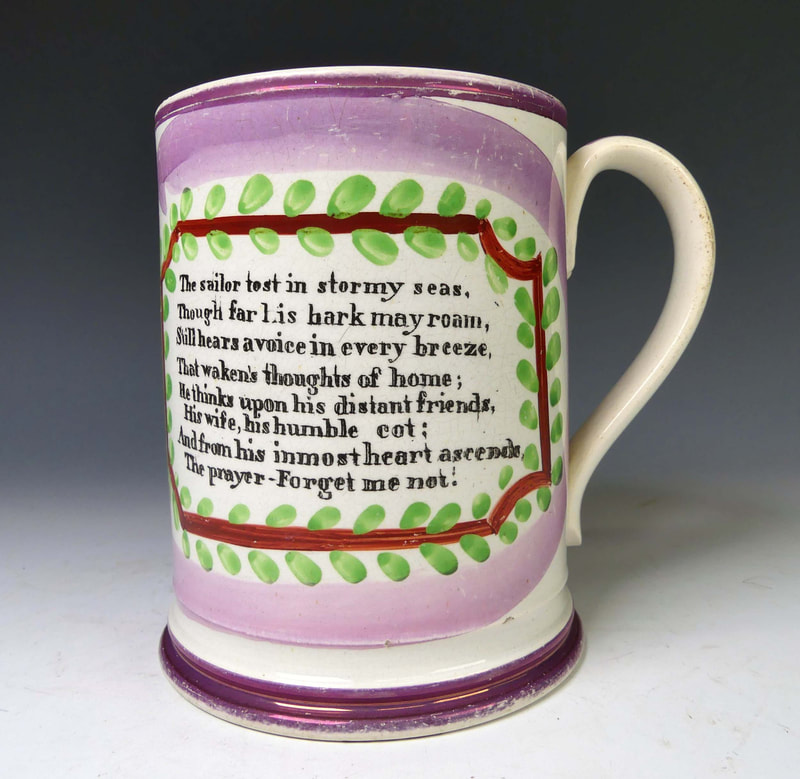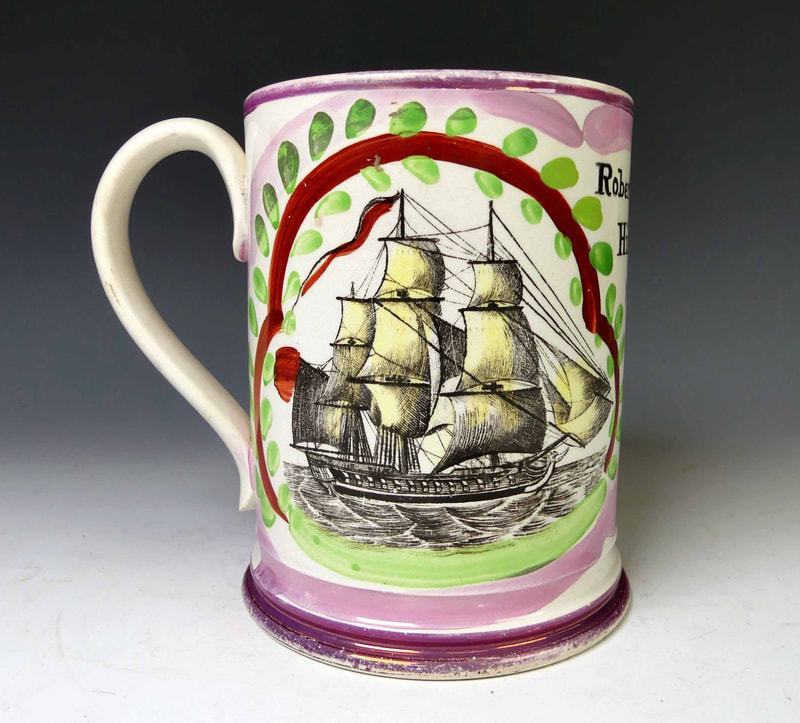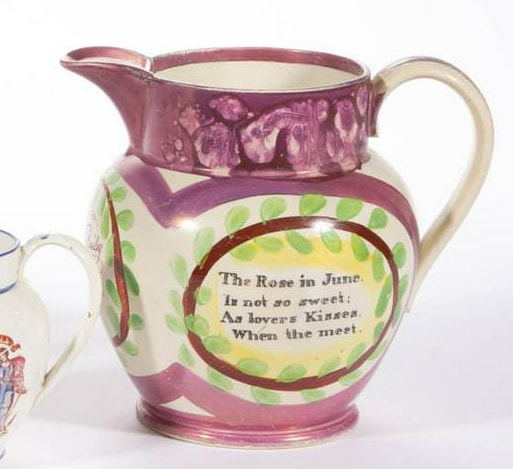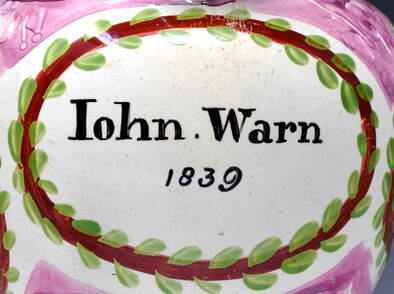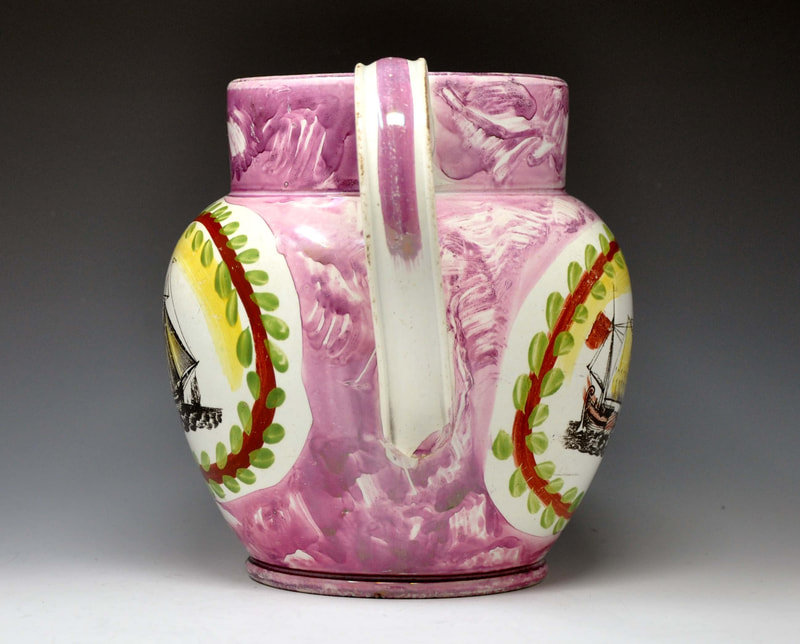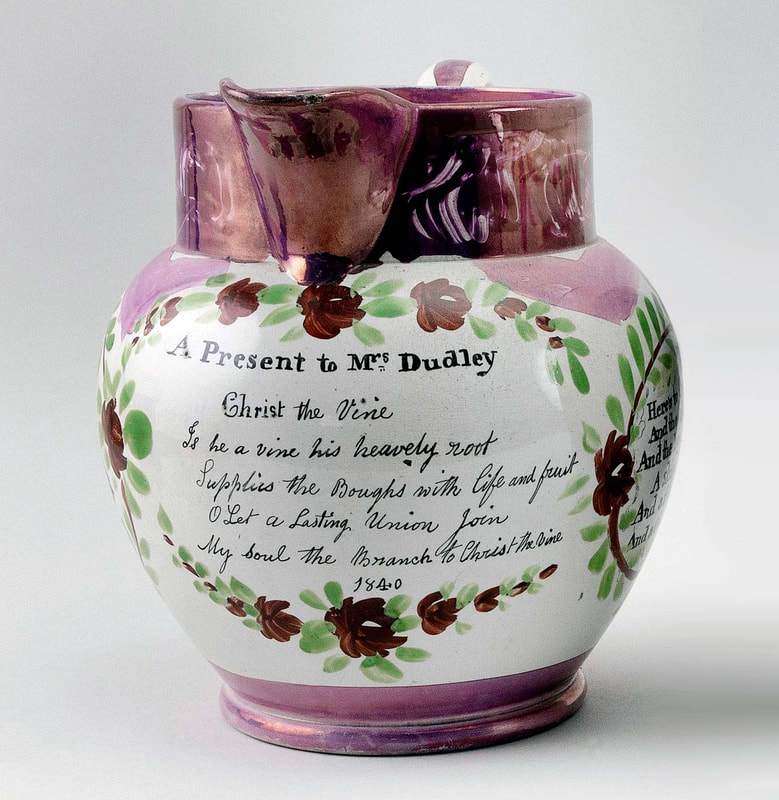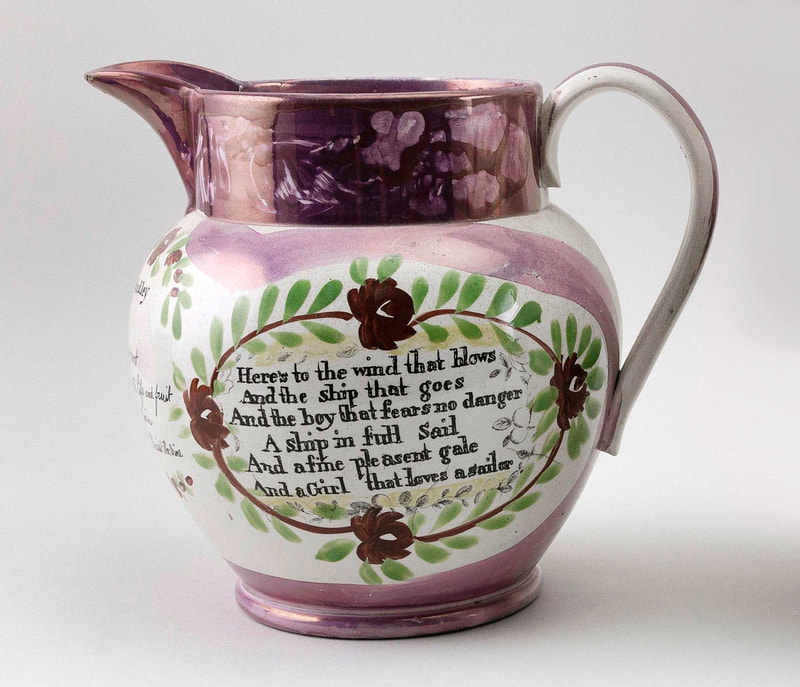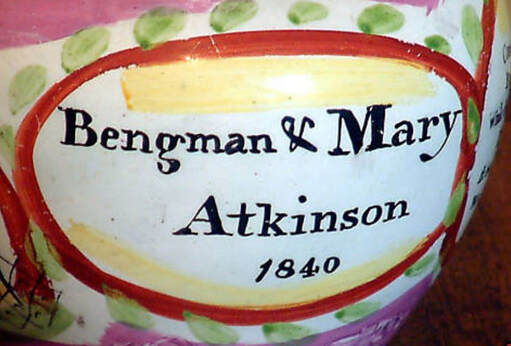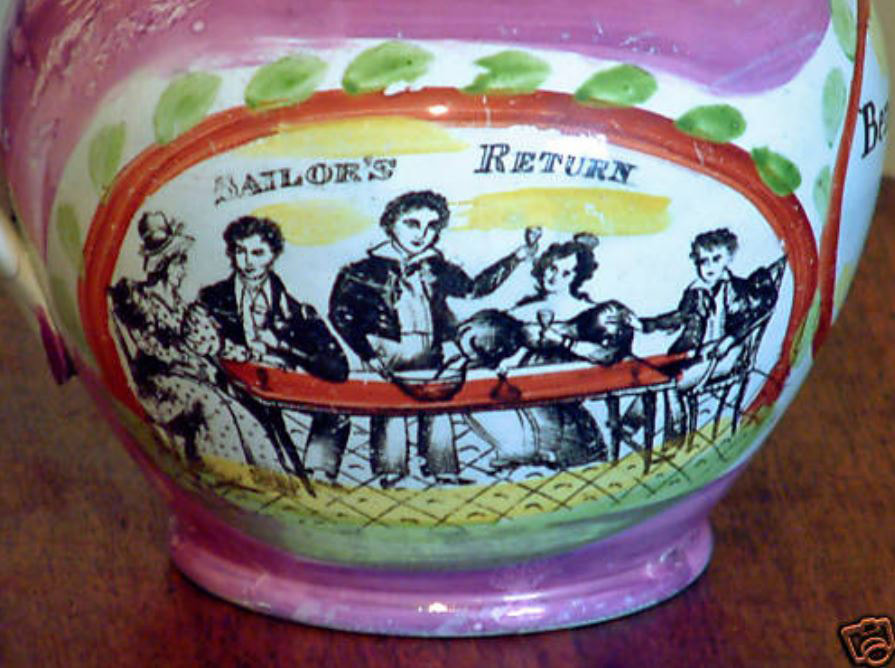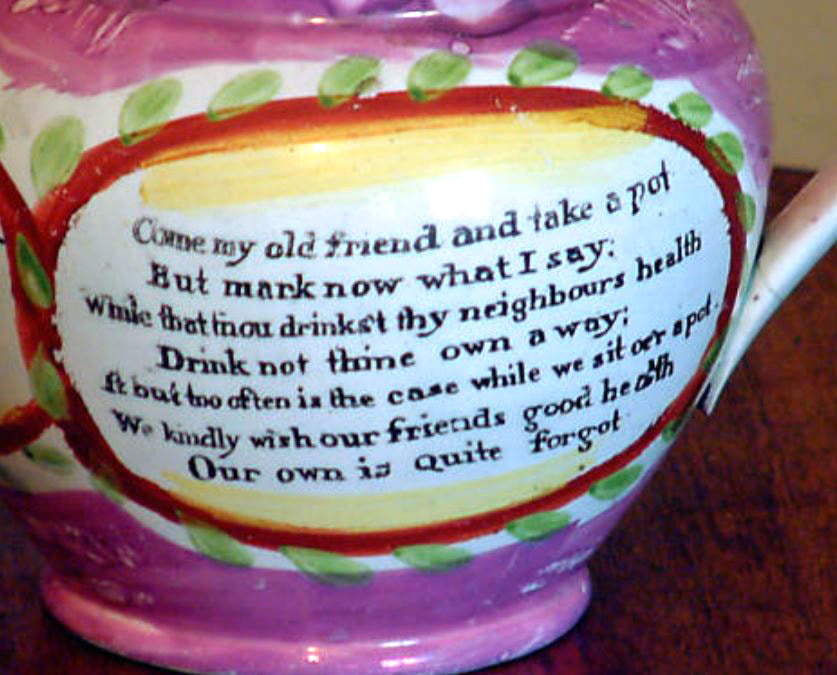Robert Maling inscriptions
Attributed to Robert Maling's Ouseburn Bridge Pottery

The items on this page are often attributed to North Shields. However, my own view is they are all from Robert Maling's Ouseburn Bridge Pottery in Newcastle. Note that none of the items on this page has the horizontal lustre marks on the handle found extensively on North Shields items of the 1830s. See right for a C, C & Co example from North Shields.
The items on this page can be divided broadly into two groups: 1. wheat ear or flower collar, pre 1830; and 2. green flecks around transfer and pink lustre collar, post 1830. See below for an example from each group with the 'My Bonny Sailor' transfer.
The items on this page can be divided broadly into two groups: 1. wheat ear or flower collar, pre 1830; and 2. green flecks around transfer and pink lustre collar, post 1830. See below for an example from each group with the 'My Bonny Sailor' transfer.
The green fleck items (post 1830) share transfers with firmly attributed Robert Maling plaques (see below). The enamel decoration is also strikingly similar. It requires no great leap of faith to accept that these green-flecked items came from the same pottery. The same transfers appear interchangeably across nearly all of the green-flecked items.
The clincher for me was finding the photo of the MALING-impressed plate below left in Steven Moore's book, Maling – The Trade Mark of Excellence! The inscription on the plate is an identical match for those on both the wheat-ear (centre below) and green-fleck groups (right below). Click on the images to enlarge them and flick between them. Note the small crosses and square tops on the letter 'L'.
Inscriptions in date order
Although this item has an inscription with a birth date of 1790, it was likely made later, perhaps as a 30th birthday present in 1820. The flowers around inscriptions on these items become more fluid as time goes on.
The jug below, from the National Maritime Museum, Greenwich, London, has an inscription dated 1823, as follows: 'Success unto the hope/And prosperous may she be/Contentment to the Owners give/And from misfortunes free.' Under the lip: 'Capt. Iohn Frazer 1823'.
This jug suggest the enameller was also proficient in producing 'cottage ware'. There must be many more examples out there.
A spectacular jug with decoration including a hand-painted sailor and his wife, and matching mug, from Norfolk Museums Service.
An undated jug with similar figural decoration to the one above.
Although the impressed Maling plaque below is undated, note its similarities to the jugs above and below. In particular, the red ribbon effect that appears at the top and bottom of the monogram above, and around the angel on the plaque below. Also, the wash of pale blue enamel.
This puzzle jug has a transfer of the ship William IV launched in 1831. The jug, at any rate, could not have been made before 1830, when William became king. It is the only example I have seen of the wheat ear decoration being used into the 1830s.
The monogram on this undated mug shows how formulaic these scrolled letters were. It appears they were copied from a printed source, rather than being improvised freehand. Above right for comparison is the 1830-dated example from the William Heath jug. One of the verses on the mug is painted in the familiar 'Maling' hand.
Thanks to Dr Sophie Nield for the information that follows. Elizabeth Fenwick of Greenside, West of Newcastle, was born 1811, and died aged 21 in 1832. Elizabeth was buried at Holy Cross Church in Ryton (see photo above) on 16 April 1832. These jugs with fine cursive script were made right the way up to 1840. They are much rarer than the number of examples on the page suggests.
A similar but undated jug with a poem about shooting owls.
Although not dated, I have attached a firmly attributed Maling plaque below. The letters are formed in the same way as those on the jug above, and it might be painted by the same hand.
Again, although undated, I have included a Maling-impressed plaque below. It is decorated by a similar amateurish hand to the jug above, and the text is poorly centred.
A less typical looking jug (no green flecks) with a hand-painted lion on either side, and maonic emblem under the spout..
These plaques have the MALING impress with a flower above. I have placed them here in the sequence because of similarities to the jug below. Note the lower case 'd' and 'y' in 'destroyed' and compare them to 'Dudley' below. 1840 seems a plausible date for plaques like these.


